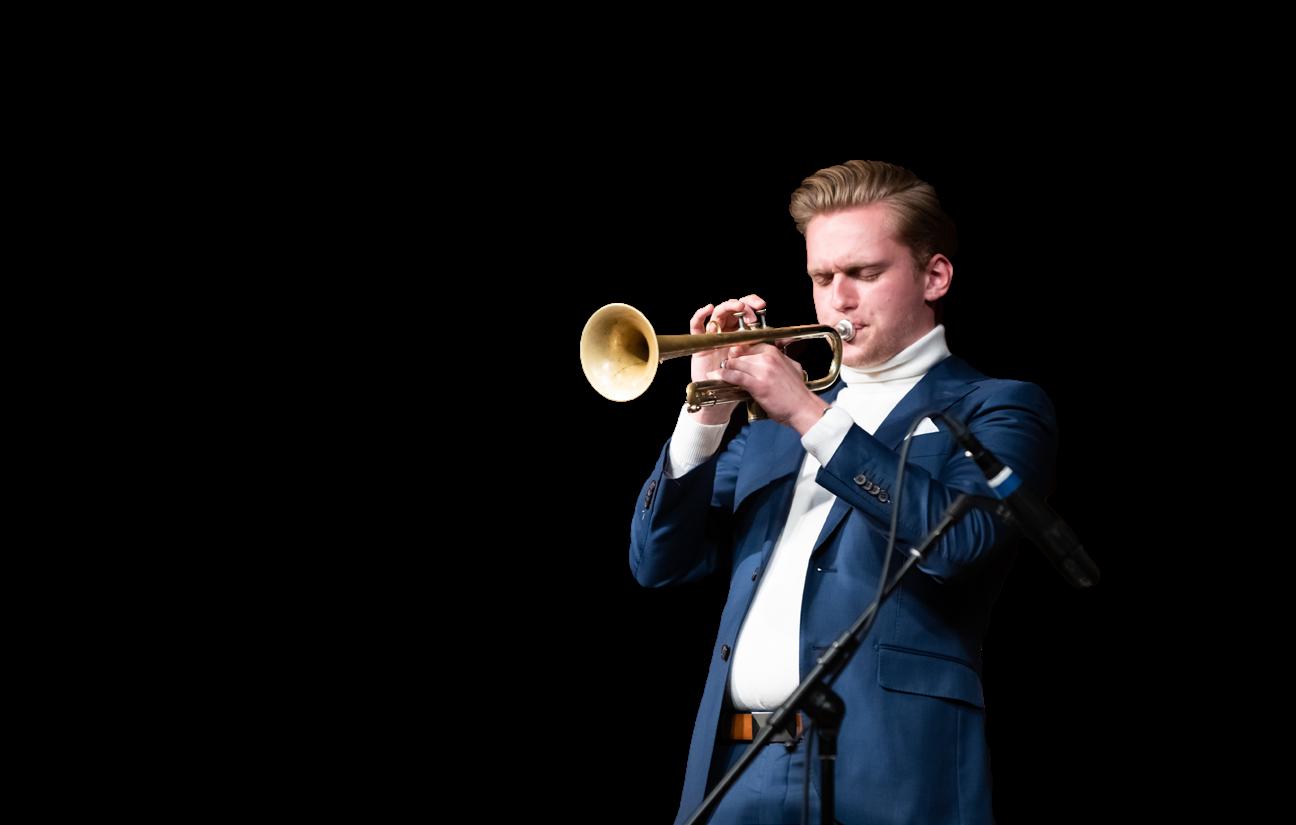
RISING STARS
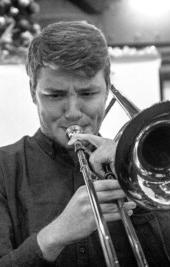
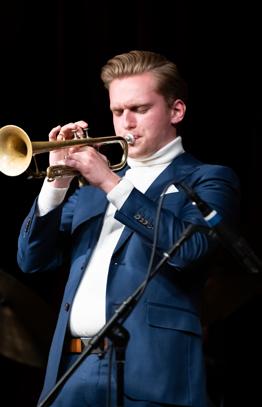
02 JUNE 2023 JERSEY JAZZ NJJS.ORG
ARTICLES/REVIEWS 08 Jersey Jazz LIVE! Ted Rosenthal Trio 11 Jazz on a Sunday Afternoon: Brian Betz/Jon Barnes 12 Jazz History: Lucky Thompson 17 Rising Stars: 2023 NJJS Scholarship Winners 25 Jazz at NJPAC: George Benson 28 McCarter’s Jazz in June 32 Rising Star: April Varner 38 Other Views 43 Big Band in the Sky COLUMNS 03 All That’s Jazz 05 Editor’s Choice 36 From the Crow’s Nest 48 Not Without You ON THE COVER _ NJJS Scholarship winners Richard LaRouech (left) and Banks Sapnar (right). LaRouech photo by Simon Thomas
IN THIS ISSUE
ALL THAT’S JAZZ
BY CYDNEY HALPIN
So much good news and gratitude to share …
The 2023 Juried Scholarship
Competition produced 17 student submissions – nine Jazz Performance applicants and eight Jazz Composition applicants, and was once again adjudicated by our prestigious panel of professional musicians, educators and industry leaders comprised of: Don Braden—world class tenor saxophonist, flutist, composer and educator, Ted Chubb—Vice President, Jazz Education + Associate Producer, Jazz House Kids, trumpeter, composer, and educator, Jason Olaine—Vice President of Programming, Jazz at Lincoln Center, Mariel Bildsten Trombonist, bandleader, sidewoman, and educator. The competition has concluded and the Board and I are delighted to announce the four winners! In the Performance category the

$1,000 winner is trombonist Richard LaRouech from William Paterson University, and the $500 winner is saxophonist Joseph Foglia, also from William Paterson University. In the Composition category the $1,000 winner is Banks Sapnar from Temple University, and the $500 winner is trumpeter Grace Fox from Manhattan School of Music. Congratulations to the winners! Congratulations to department heads Dr. David Demsey, Terell Stafford, and Ingrid Jensen respectively for supporting this program and encouraging their students to participate.
While the competition ultimately produced four winners, it was a very competitive field, and the board and I would like to acknowledge and congratulate the other 13 applicants whose submissions have proven that jazz is alive and well and competently in the hands of this generation.
The Performance applicants were:
Lasse Corson/WPU/piano, Dominic Carnival/Montclair State University/bass, Nick Barbuto/MSU/drums, Gabriel Chalick/Princeton/trumpet, Dorian Wylde/MSU/trumpet, Ariana Hartunian-Sowa/Rutgers/saxophone, Isaac Yi/Princeton/saxophone. The Composition applicants were Seo Bin Cho/WPU/piano, James Bally/WPU/piano, Eoin O’Mara/WPU/ guitar, Jimmy Waltman/Princeton/ trumpet, Justin Farquhar/Rutgers/ trombone, Nicolas Martin/MSU/ saxophone. Learn these musicians’ names as there’s no doubt you’ll be seeing these cats in the years to come.
Our deepest gratitude to judges Don, Ted, Mariel and Jason for their dedication and expertise, and for their input and advice as we continue to grow this competition.
So many life skills are developed through the discipline of music.
Thank you and congratulations to all the teachers and mentors of these
winners and applicants for your dedication and training. The art of jazz takes a village and each of you has a vital role in the personal and professional lives of these fine young musicians. For more information on the winners, please see page 17. We’re exceedingly grateful to Nan Hughes Poole for her generous multiyear donation to help support this initiative. If you’d like to make a donation to further support and expand the 2024 competition prizes, you can do so at njjs.org via the red “Make a Donation” button on the homepage, or by check payable to NJJS, 382 Springfield Ave., Suite217, Summit, NJ 07091. Please note “Scholarship.”
June marks our one-year anniversary in partnership with the Madison Community Arts Center in presenting our Sunday afternoon Jersey Jazz LIVE! programming. With the help and expertise
03 JUNE 2023 JERSEY JAZZ NJJS.ORG
ALL
of MCAC’s Director of Arts and Events John Pietrowski and Arts and Events Coordinator Caroline Romanelli, we had a very successful year of concerts showcasing “rising stars”—our new initiative which presents young talent—alongside acclaimed artists. Thank you, John and Caroline for your incredible efforts in support of NJJS.
Jazz is a “village”, and I’d like to highlight all the musicians, presenters, supporters, volunteers, and paid professionals who were our village this past year: Evan Sherman, Davis Whitfield, Jerry Weldon, John Lee, Adrian Cunningham, Alberto Pibiri, Jim Robertson, Martin Pizzarelli, Linus Wyrsch, Bob Albanese, David Ostwald, James Chirillo, Joe Boga, Michael Hashim, Sarah Partridge, Tomoko Ohno, Rick Crane, Chuck Granata, Jim Burns, Leonieke Scheuble, Nick Scheuble, Diego Figueire-
do, Warren Vaché, Jr., all the Rising Stars, Rachel Domber, Patti Graham, Tom Salvas, Greg Burrus, fellow NJJS board members, and event attendees.
A heartfelt thank you to you ALL!
Our next LIVE! concert is Sunday, June 11, and will feature pianist Ted Rosenthal, with Noriko Ueda on bass, and Zach Adleman on drums. The Rising Stars will be an ensemble from Montclair State University. Please see page 08 for more information.
If you haven’t yet experienced a LIVE! event, I encourage you to do so. Come celebrate America’s original art form with joy and community and support our 51st year dedicated to the performance, promotion and preservation of jazz.
Admission to LIVE! concerts is $10 for members and $15 for non-members payable at the door with cash or credit card. Non-member admission fee is applicable to-
wards membership if joining NJJS on same day as event. There are light refreshments for purchase. There is ample FREE street parking and the venue and facilities are easily accessible. Doors open at 2:30PM, and music begins at 3:00PM.
Madison Community Arts Center, Rose Hall, 10 Kings Road, Madison, NJ.
Perhaps you’d like to sponsor or co-sponsor a future
Jersey Jazz LIVE! event?
Funding for the Jersey Jazz LIVE! events has been made possible, in part, by funds from Morris Arts though the New Jersey State Council on the Arts/ Department of State, a partner agency of the National Endowment for the Arts. While we’re very grateful for this support, this funding doesn’t cover the full costs of our programming. If you or someone you know would like to
sponsor or co-sponsor one of these programs, please contact me at pres@njjs.org for more information.
The much beloved Chicken Fat Ball was held this past April in Maplewood, NJ, and the board and I would like to thank event producers Al Kuehn, Don Greenfield, and Ed Stuart for generously donating the net proceeds of the event to NJJS. This money will help fund the “rising stars” at our LIVE! events.
Thank you, gentlemen for supporting the next generation of musicians.
It’s that time of year again for “Jazz on the Back Deck” at the Morris Museum which begins Thursday, June 22nd with Antoinette Montague. Bring a chair, a picnic, and kick off the summer programming in style! Please see page 05 for more information and for tickets visit morrismuseum.org.
04 JUNE 2023 JERSEY JAZZ NJJS.ORG
THAT’S JAZZ
EDITOR’S CHOICE
BY SANFORD JOSEPHSON
Lots of Great Outdoor Jazz This Summer and Early Fall

With spring weather finally arriving, the opportunities for live jazz outside are popping up all over.
The Bryant Park Piano in the Park series started in 2004 and even persisted for three days a week during the pandemic summer of 2020. The Wall Street Journal’s Charles Passy wrote an article about the series in August 2020, quoting Daniel Biederman, Executive Director of the Bryant Park Corporation, who said, “It was important for the morale of the city.”
The series is back to five days a week now, and the music, from 12:302:30 p.m. runs through Friday, October 6. On Friday, May 19, the pianist
was Pete Malinverni, who is also Associate Professor of Jazz Studies, Piano, at SUNY Purchase’s Conservatory of Music. And, he had a special guest, baritone saxophonist Gary Smulyan. The weather was perfect, and so was the music, which included Sammy Cahn’s “It’s You or No One”, Billy Strayhorn’s “Take the A Train”, Richard Rodgers’ “Isn’t It Romantic?”, and Antonio Carlos Jobim’s “Wave.” Malinverni’s latest album, On the Town Pete Malinverni Plays Leonard Bernstein (Planet Arts: 2022) was reviewed by Joe Lang in the February 2022 issue of Jersey Jazz. “Malinverni,” Lang wrote, “reconceives these songs in ways that are fresh, making
them sound like new compositions.”
Among other pianists on the Piano in the Park schedule are: Jon Weber (July 3-7), Daryl Sherman (July 10-14), Joel Forrester (July 31-August 4), Frank Owens (August 28-September 1), Danny Mixon (September 11-15), and Marc Devine (September 18-22). Of special note is Devine’s scheduled tribute to the late Junior Mance on September 20.
Jazz at Lincoln Center’s Jazz in Times Square series, held on Thursdays at 5 p.m. at Broadway and 46th Street, kicked off May 4 with the Curtis Brothers Quartet. Some of the highlights coming up include pianist Miki Yamanaka on June 8, drummer Winard Harper and Jeli Posse on July 6, trombonist Mariel Bildsten’s septet on July 13, tenor saxophonist Roxy Coss leading a quartet on July 27, and the Grace Fox Big Band on August 3. Trumpeter Fox is one of this year’s
NJ Jazz Society Scholarship winners. See more about her on page 23.
The Morris Museum recently released its schedule of Outdoor Concerts on the Back Deck. Some of the jazz highlights: vocalist Antoinette Montague on June 8, tenor saxophonist/flutist Don Braden leading a big band and a quartet on June 29, bassist Martin Pizzarelli and Friends on July 13, and drummer Evan Sherman and his Big Band on August 10.
Finally, the Morristown Jazz & Blues Festival announced it is expanding to two days this year, starting off on Friday September 22 at 5 p.m. with three groups performing on Pioneer’s Plaza. The traditional Saturday (September 23) lineup will again be on the Morristown Green and will feature the U.S. Navy Commodores Jazz Band, the Hot Sardines, and Louis Prima, Jr. and the Witnesses, among others.
05 JUNE 2023 JERSEY JAZZ NJJS.ORG
ABOUT NJJS
Founded in 1972, The New Jersey Jazz Society has diligently maintained its mission to promote and preserve America’s great art form—jazz. To accomplish our mission, we produce a monthly magazine, Jersey Jazz ; sponsor live jazz events; and provide scholarships to New Jersey college students studying jazz. Through our outreach program Generations of Jazz, we provide interactive programs focused on the history of jazz. The Society is run by a board of directors who meet monthly to conduct Society business. NJJS membership is comprised of jazz devotees from all parts of the state, the country and the world.
MEMBER BENEFITS
You become an integral part of the NJJS community, and the history and future of jazz
Access to 11 Digital Issues of our Award Winning Jersey Jazz Magazine
— Featuring Articles, Interviews, Reviews, Events and More
Discounts to our Jersey Jazz
LIVE! Sunday Concerts
Discounts at NJJS Sponsored Concerts & Events.
MUSICIAN MEMBERS
FREE Listing on NJJS.org “Musicians
List” with Individual Website Link
FREE Gig Advertising in our Monthly eBlast
THE RECORD BIN
JOIN NJJS
Family/Individual $45
(Family includes to 2 Adults and 2 children under 18 years of age)
Family/Individual 3-Year $115
Musician Member $45 / 3-Year $90 (one time only, renewal at standard basic membership level.)
Youth $15 - For people under 21 years of age. Date of Birth Required.
Give-A-Gift $25 - Members in good standing may purchase unlimited gift memberships.
Applies to New Memberships only.
Fan $75 - $99
Jazzer $100 - $249
Sideman $250 - $499
Bandleader $500+
Corporate Membership $1000
Members at Bandleader level and above and Corporate Memberships receive special benefits. Please contact Membership@njjs.org for details.
Visit www.njjs.org or email info@njjs.org for more information on our programs and services
A collection of CDs & LPs available at reduced prices at most NJJS concerts and events and through mail order www.njjs.org/Store
The New Jersey Jazz Society is qualified as a tax exempt cultural organization under section 501(c)(3) of the Internal Revenue Code, Federal ID 23-7229339. Your contribution is tax-deductible to the full extent allowed by law. For more Information or to join, visit www.njjs.org
06 JUNE 2023 JERSEY JAZZ NJJS.ORG
Magazine of the New Jersey Jazz Society
VOLUME 51 • ISSUE 06
NJJS org
Jersey Jazz (ISSN 07405928) is published monthly for members of The New Jersey Jazz Society
382 Springfield Ave., Suite 217, Summit, NJ 07901 973-229-0543 • info@njjs.org
Membership fee is $45/year.
All material in Jersey Jazz, except where another copyright holder is explicitly acknowledged, is copyright ©New Jersey Jazz Society 2020. All rights reserved. Use of this material is strictly prohibited without the written consent of the NJJS.
Editorial Staff
EDITOR
Sanford Josephson, editor@njjs.org
ART DIRECTOR
Michael Bessire, art@njjs.org
CONTRIBUTING PHOTO EDITOR
Mitchell Seidel, photo@njjs.org
CONTRIBUTING EDITORS
Noal Cohen, Bill Crow, Joe Lang, Dan Morgenstern, Jay Sweet
CONTRIBUTING PHOTOGRAPHERS
Joy Glenn, Eduardo Pavez Goye, Dena Katz, Susie Knoll, Cathy Lillian, Lawrence Sumulong, Simon Thomas, Meredith Truax, Tory Williams
WEBMASTER
Christine Vaindirlis
New Jersey Jazz Society, Officers 2021
PRESIDENT
Cydney Halpin, pres@njjs.org
EXECUTIVE VP vicepresident@njjs.org
TREASURER
Mike Katz, treasurer@njjs.org
VP, MEMBERSHIP membership@njjs.org
VP, PUBLICITY
Sanford Josephson, sanford.josephson@gmail.com
VP, MUSIC PROGRAMMING
Mitchell Seidel, music@njjs.org
RECORDING SECRETARY
Irene Miller
CO-FOUNDER
Jack Stine
Advertising
DIRECTOR OF ADVERTISING
Cydney Halpin, advertising@njjs.org
ADVERTISING RATES
Full Page: $135, Half Page: $90, 1/3
Page: $60, 1/4 Page: $30
For reservations, technical information and deadlines contact advertising@njjs.org or visit njjs.org/Magazine/Advertise .
Make payment at PayPal.com: payment@ njjs.org, or via check made payable to NJJS, 382 Springfield Ave., Suite 217, Summit, NJ 07901
IMMEDIATE PAST PRESIDENT
Mike Katz DIRECTORS
Jay Dougherty, Cynthia Feketie, Pete Grice, Carrie Jackson, Caryl Anne McBride, Robert McGee, James Pansulla, Stew Schiffer, Elliott Tyson, Jackie Wetcher
ADVISORS
Don Braden, Mariel Bildsten, Ted Chubb, Al Kuehn, Jason Olaine
07 JUNE 2023 JERSEY JAZZ NJJS.ORG
Ted Rosenthal Trio: Standards, Original Compositions, and Classical Themes Reimagined for Jazz
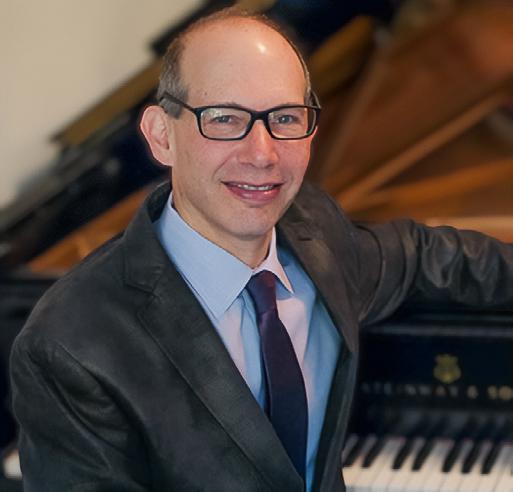
Pianist Ted Rosenthal has released 15 albums as a leader, among them 2014’s Rhapsody in Gershwin (Playscape) and 2010’s Impromptu (CD Baby). The former featured his arrangement of Gershwin’s “Rhapsody in Blue” for a jazz trio; the latter demonstrated his reconceptualizing of classical themes for a jazz trio.
Albums like those led National Public Radio’s Kevin Whitehead to describe Rosenthal as having “a classical pianist’s reverence for the material and a jazz musician’s way of running off of it,” adding that because Rosenthal “is trained in and comfortable with jazz and classical music, he gets Gershwin’s sensibility.”
At 3 p.m. on Sunday, June 11, Rosenthal will be leading a trio at the New Jersey Jazz Society’s Jersey Jazz LIVE! concert, and he’ll touch all the bases of themes he is known for and familiar with. “We’ll do some of
my arrangements of Great American Songbook and jazz standards,” he said, “and a few originals, including from my jazz opera, Dear Erich. We’ll also do some of my arrangements of classical themes reimagined for jazz trio.” Joining him will be bassist Noriko Ueda and drummer Zach Adleman.
Rosenthal was the pianist in Gerry Mulligan’s final quartet and has performed or recorded with such other jazz giants as Bob Brookmeyer, Art Farmer, James Moody, and Phil Woods. When Rosenthal released a duo album with Brookmeyer in 2004 (One Night in Vermont: Planet Arts Records), AllAboutJazz’s Celeste Sunderland wrote: “Two people. That’s all you need to create a stunning album complete with all of jazz’s beloved nuances, all the explosive vitality of a live performance and all those stirring moments that remind you why you need it in your life ... Cole
08 JUNE 2023 JERSEY JAZZ JERSEY JAZZ LIVE!
PHOTO BY CATHY LILLIAN
Ted Rosenthal
Porter, George and Ira Gershwin, Jerome Kern, Irving Berlin ... they’re all here. Rosenthal and Brookmeyer, distinguished composers and arrangers themselves, take classic melodies from these revered songwriters, and enliven them with glistening contrapuntal streams, gracious improvisations, and playful duels.”
In addition to playing frequently with Rosenthal, Ueda is the bassist in drummer Sherrie Maricle’s DIVA Jazz Orchestra and in Artemis, the all-female septet led by pianist Renee Rosnes. Ueda’s first album as a leader, Debut (Terashima Records: 2015), features Rosenthal on piano and Quincy Davis on drums. Originally from Hyogo, Japan, Ueda graduated from the Berklee College of Music in 1997 and relocated to New York. In 2002, she won the BMI Foundation’s Charlie Parker Jazz Composition prize for her original

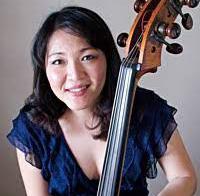
big band piece, “Castle in the North”. Adleman studied and performed with Jazz House Kids and the Jazz at Lincoln Center Youth Orchestra while growing up in Montclair, NJ.
He received his Bachelor’s Degree for Jazz Performance at Michigan State University in 2019 and his Master’s Degree in Jazz Performance at the Juilliard School in 2021. Adleman was the percussionist on saxophonist Ted
Nash’s 2017 Motema album, Presidential Suite: Eight Variations on Freedom, which won a Grammy for Best Large Jazz Ensemble Album. While at Michigan State, he performed on trombonist Michael Dease’s 2018 Posi-Tone album, Reaching Out.
The Ted Rosenthal Trio will be preceded by a Rising Star Opening Act featuring a small ensemble from the Jazz Studies Program at Montclair
State’s John J. Cali School of Music. The ensemble members are: Will Schetelich, trumpet, Scotch Plains, NJ; Ryan Huston, tenor saxophone, Toms River, NJ; Lorna Morales, piano, Elizabeth, NJ; Felipe Orozco, bass, Perez Zeledon, Costa Rica/ Orange, NJ; and Matt Vera-Corcoran, drums: Pompton Lakes, NJ.
The Madison Community Arts Center is located at 10 Kings Road in Madison, NJ. Admission to this event will be $10 for members and $15 for non-members, payable at the door with cash or credit card. There will be light refreshments for purchase.
Funding for Jersey Jazz LIVE! has been made possible, in part, by funds from Morris Arts through the New Jersey State Council on the Arts/ Department of State, a partner agency of The National Endowment for the Arts.
09 JUNE 2023 JERSEY JAZZ NJJS.ORG
JAZZ LIVE!
JERSEY
PHOTO OF ZACK ADLEMAN BY JOY GLENN
Noriko Ueda
Zach Adleman

T H E G R E A T 8 D O L L A R S A L E
Guitarist Brian Betz and Trumpeter
Jon Barnes at Finale of This Season’s Toms River Jazz Series
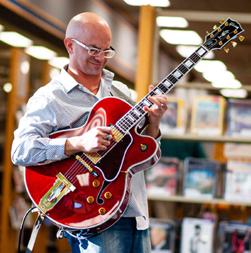
When guitarist Brian Betz released his debut album, Without A Doubt on the Dreambox Media label in 2003, AllAboutJazz’s Stewart Mason described his playing as having a “woody, Wes Montgomery-like tone that is so appealing ... This is a most promising debut.”
AllAboutJazz’s Mike Shanley, reviewing Betz’s Dreambox Media recording, Dichotomy, called Betz’s composition, “Cohabitation”, “the ideal, bringthem-to-their-feet track to kick off an album.” The quartet led by Betz on the album, Shanley wrote, has “a traditional, straight-ahead approach, but the push and pull of their music
makes them stand out from the crowd.”
At 3 p.m. on Sunday, June 4, Betz will be joined by trumpeter Jon Barnes for the final 2022-23 Jazz on a Sunday Afternoon concert at the Jay and Linda Grunin Center for the Performing Arts in Toms River, NJ.
Betz and Barnes are adjunct professors in the Jazz Studies program at Rowan University in Glassboro. Betz has performed at several important East Coast jazz events such as Cape May’s Exit Zero Festival, the Berks Jazz Festival in Reading, PA, and the Somers Point, NJ, Jazz Festival. He is a two-time winner of the Betty Carter International Jazz Competition
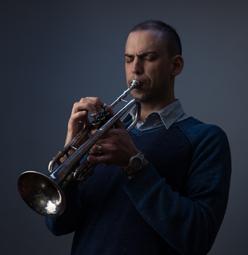
and a runner up in the Henry Mancini Jazz Competition. In a recent interview in Jazz Guitar Today, Betz was asked who his favorite jazz guitarists were. His response: Wes Montgomery, Pat Martino, and George Benson.
Barnes is a trumpet soloist with
the United States Navy Band Commodores. He has also worked as a freelance musician in New York City and Philadelphia, performing with vocalist Bernadette Peters, trombonist John Fedchock, and saxophonist Dick Oatts, among others. He has also recorded with the Bobby Sanabria Big Band. The Commodores band, which will be appearing in September at the Morristown Jazz & Blues Festival, is considered the Navy’s premier jazz ensemble, performing big band jazz since 1969.
The Betz/Barnes concert will be held in Grunin’s Gia Maione Prima Foundation Studio Theatre. Jazz on a Sunday Afternoon is made possible, in part, through the support of the Wintrode Family Foundation. The New Jersey Jazz Society a proud media sponsor of this series. For more information or to order tickets, log onto grunincenter.org or call (732) 255-0500.
11 JUNE 2023 JERSEY JAZZ NJJS.ORG
JAZZ ON A SUNDAY AFTERNOON
Jon Barnes
Brian Betz
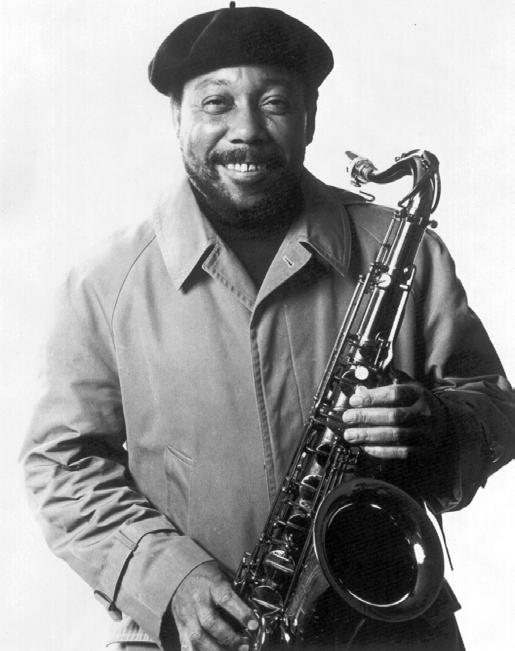
Lucky Thompson: Underappreciated Titan of the Tenor Saxophone
His 30-Year Career Produced a Host of Fascinating, Innovative, and Highly Regarded Recordings.
BY NOAL COHEN
Few musicians command as much universal respect as saxophonist/composer/arranger Lucky Thompson. Just mentioning his name among the relatively few who still remember him and his recordings induces raised eyebrows and appreciative smiles. Yet because of a variety of factors, including a very difficult personality, unrealistic expectations, and - despite his sobriquet - bad luck, his considerable legacy has never received the status and recognition it really deserves. Also, by abandoning his professional career while still in the prime of his
life, he failed to reach the full potential his talent had predicted. Instead, he became a notable and regrettable casualty of jazz music’s first century. Thompson’s unique characteristics as a tenor saxophone soloist also proved problematic in terms of his instrumental legacy. While emerging at the beginning of the bebop era and participating in some key recording sessions of that genre, he chose not to follow closely in the footsteps of Charlie Parker or Lester Young, the dominant saxophone models of the time. Instead, he drew on Coleman Hawkins, Chu Berry, Ben Webster,
12 JUNE 2023 JERSEY JAZZ JAZZ HISTORY
and Don Byas for his inspiration, ingeniously updating those earlier influences harmonically and rhythmically to create a most original sound and conception that could be adapted to almost any musical context. In an insightful 2004 article in Annual Review of Jazz Studies, saxophonist Tad Shull has analyzed Thompson’s tenor saxophone style and describes it as “backward” in the sense that his phrasing is the opposite of what one might expect, with accents falling in the “wrong” places on the “wrong” beats, and in the “wrong” order. That such an approach was successful is a tribute to Thompson’s great talent, but at the same time, a hindrance to the facile categorization and assimilation of his playing. The subtleties of his innovations were difficult for many listeners, critics, and musicians to fully appreciate—especially in his later years.
Eli Thompson, Jr. entered the

world on June 16, 1923,* in Columbia, SC, the eldest of three siblings born to Eli and Azalee Dawkins Thompson. The family moved to Detroit shortly thereafter, and it was in the Motor City that he was raised and received his first musical training and experience. Although he did not own a saxo-
phone until he was in his teens, he had been teaching himself the workings of the instrument since the age of eight and, by his high school graduation (Cass Technical), was playing professionally. At the age of 19, he was appearing at the Paradise Theater, billed as “Detroit’s own sensational young
tenor sax star.” Always his own man and a virtuosic soloist, his recording of “Just One More Chance” for the RCA Victor label in 1947 gained considerable attention and even comparisons with Hawkins’ classic version of “Body and Soul,” inscribed in jazz history some eight years earlier.
By 1950, Thompson had already worked and recorded with Louis Armstrong, Count Basie, Dinah Washington, Charles Mingus, Charlie Parker, and Dizzy Gillespie, participating in many groundbreaking sessions that defined the transition from swing to bebop. And as that decade evolved, so did his style, taking on more modern harmonic and rhythmic aspects. In April 1954, he recorded two extended blues with Miles Davis for the Prestige label and made history in the process by helping to revive Davis’ flagging career and ushering in a new genre that would become known as
13 JUNE 2023 JERSEY JAZZ NJJS.ORG
JAZZ HISTORY
hard bop. His solos on these tracks (“Walkin’” and ”Blue ‘N’ Boogie”) are models of melodic construction steeped in elegance and passion. But his unique, hybrid approach to improvisation, bridging the old and new and utilizing unconventional phrasing, was not an easy one to emulate and proved an obstacle to his acceptance as a major saxophone influence.
In the mid-1950s, Thompson’s star appeared to be rising as he turned out many memorable recordings under his own name and contrib-
“
IN THE
uted significantly to sessions led by Milt Jackson, Jimmy Cleveland, Stan Kenton, Oscar Pettiford and Quincy Jones to name just a few. In reality, however, his thorny personality and refusal to compromise were making survival in the music business difficult, at least in the United States. His first extended stay in Europe took place in 1956 and from then until he left music for good in the mid 1970s, his career was a series of relocations, withdrawals, and comebacks. Nonetheless, his European recordings are
MID-1950S THOMPSON’S STAR APPEARED TO BE RISING. ”

generally outstanding although poorly distributed at the time they were issued and, unfortunately, they received little attention in the USA. As a result, artists such as Sonny Rollins and John Coltrane rapidly eclipsed Thompson as the decade progressed.
Another aspect of Thompson’s oeuvre that is insufficiently recognized is his pioneering work on soprano saxophone. He began to play the smaller horn in Paris in 1957 and mastered this difficult instrument in a manner characterized by remarkable intonation, facility, and tone. First recording on soprano in early 1959 in Paris, Thompson’s
work actually predates that of John Coltrane by over a year. But because these sessions were issued only in Europe, they received little attention and were quickly forgotten until their reissue many years later. He would not record on soprano in his home country until 1963 (Lucky Thompson Plays Jerome Kern and No More for the Moodsville label) and by then, radical new directions in jazz initiated by Coltrane, Eric Dolphy, Ornette Coleman, and others were in the forefront. As a result, Thompson’s elegant but traditionally based work would again be overlooked.
Thompson was a prolific composer churning out a broad range of material from pop and rhythm and blues songs to complex post-bop pieces. He was also one of a small number of musicians of his era concerned with the protection of rights to their music through copyright registration and the
NJJS.ORG 14 MAY 2023 JERSEY JAZZ
JAZZ HISTORY
establishment of their own publishing companies. Such business aspects of the musical life were seldom attended to, and many fine composers lost control of their works or received meager royalties from them. Thompson fought against this exploitation by entrenched record producers and publishers throughout his career, burning bridges in the process and ending up deeply embittered by an industry he viewed as corrupt and insensitive to genuine creativity and quality.
After teaching briefly at Dartmouth College in the early 1970s, Thompson, then only in his 50s, withdrew from music completely and essentially was not heard from again until discovered living in an unhoused condition in the Seattle area in the mid-1990s. He had drifted into paranoia and dementia and spent his remaining years in assisted living facilities and nursing homes. He died of Alzheimer’s disease in 2005.
As we celebrate Lucky Thompson’s 100th birthday, it is evident that he was a phenomenal talent who left a significant musical legacy despite contending with a number of professional and personal difficulties. His 30-year career transcended eras and genres and produced a host of fascinating, innovative, and highly regarded recordings. If you are unfamiliar with them, many are still available and highly recommended.
* Note regarding Thompson’s date of birth: I feel obligated to mention that most sources indicate he was born in 1924; however, in my research on him, I have found compelling evidence that his birth actually occurred in 1923 and have chosen to stick with that datum until proven wrong.
Noal Cohen is an author, musician, jazz researcher, and discographer based in Montclair, NJ.

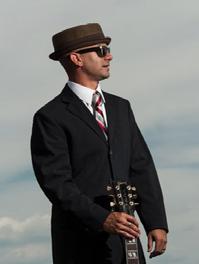

NJJS.ORG 15 MAY 2023 JERSEY JAZZ
visit grunincenter.org. Grunin Center Box Office Hours Tuesday-Friday 12:00pm-5:00pm 732-255-0500 College Drive P Toms River, NJ Contact the Box Office four weeks prior to any show to arrange for disability and accessibility services. Jon Barnes
4 3:00pm Brian Betz
JAZZ HISTORY For the complete performance schedule,
Sunday June

FEATURING
Ted Rosenthal Trio with Noriko Ueda, bass & Zach Adleman, drums
SUNDAY, JUNE 11, 3:00PM
Madison Community Arts Center 10 KINGS ROAD, MADISON, NJ
FREE STREET PARKING ON KINGS ROAD
$ 10 MEMBERS | $ 15 NON-MEMBERS
REFRESHMENTS AVAILABLE FOR PURCHASE

Jazz LIVE!
Jersey
New Jersey Jazz Society Awards
2023 Juried Scholarships
Students from William Paterson, Temple, and Manhattan School of Music Were Selected as Winners
BY SANFORD JOSEPHSON
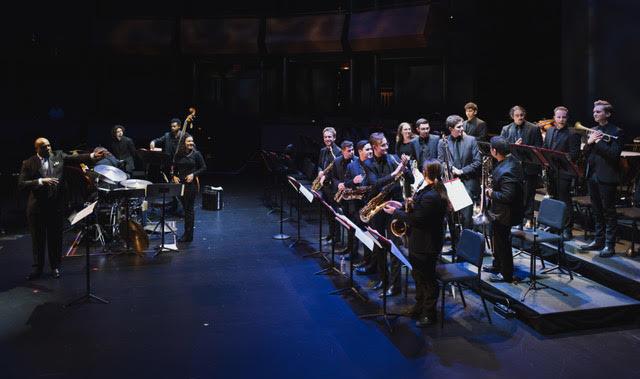
The winners of the New Jersey Jazz Society’s Juried Scholarship Competition for 2023 are:
» $1,000 prize for Performance
Trombonist Richard LaRouech, Buffalo, NY, William Paterson
University Jazz Studies
» $1,000 prize for Composition:
Trumpeter Banks Sapnar, Haddonfield, NJ, Boyer College of Music and Dance, Temple University Department of Jazz Studies
» $500 prize for Performance
Saxophonist Joseph Foglia, Raleigh, NC, William Paterson
University Jazz Studies
» $500 prize for Composition
Trumpeter Grace Fox, Marlton, NJ, Manhattan School of Music Jazz Arts Program
17 JUNE 2023 JERSEY JAZZ
RISING STARS
PHOTO BY LAWRENCE SUMULONG
The Temple Big Band plays Banks Sapnar’s “Red Braid”
RISING STARS
Richard LaRouech
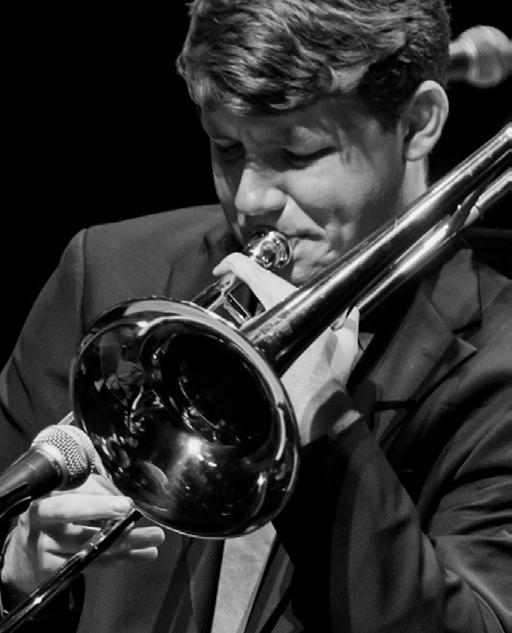
The competition was open to all college students currently enrolled in a New Jersey college undergraduate music program and to New Jersey residents who are enrolled in an out-of-state college undergraduate program. Along with the cash awards, the winning students will also receive guidance, mentorship, and the opportunity to perform with an industry professional. The competition was generously sponsored by Nan Hughes Poole. NJJS would like to thank her for her patronage and stewardship.
The NJJS Board of Directors would also like to thank the esteemed panel of judges: trombonist Mariel Bildsten, saxophonist/flutist/educator Don Braden, trumpeter/educator Ted Chubb, and Jason Olaine, Director of Programming and Touring for Jazz at Lincoln Center.
Here are the winners:
Richard LaRouech
Richard LaRouech had an epiphany when he participated in his first New York State School Music Association (NYAAM) AllState Jazz Ensemble competition. He was a freshman at East Aurora High School in a Buffalo suburb and “was interested in jazz, but I did not practice or listen to it regularly,” he said. The special guest at the competition was trombonist Steve Davis, and “after hearing him play, I wanted to sound like him,” LaRouech recalled. “I went home and listened to every record of his I could find.”
After his exposure to Davis, LaRouech became interested in the jazz history of the trombone. “I wanted to listen to those who influenced his playing,” he said. “First, I checked out J.J. Johnson’s record, Blue Trombone (Columbia: 1957) and was stunned by his playing, which made
18 JUNE 2023 JERSEY JAZZ
RISING STARS
me question how anybody could play the trombone as he did. Many trombone players have called J.J. Johnson our Charlie Parker because he revolutionized bebop playing on the trombone, making it sound effortless. His complete control of the horn is impeccable, making him one of my biggest musical influences to this day.
“Curtis Fuller was another early influence of mine who captured my attention, especially on the (John Coltrane) album, Blue Train (Blue Note: 1957) with his iconic solo on the title track. That was one of the first solos I ever transcribed. To round out what I would call my initial ‘big three’ of the slide trombone would be Slide Hampton and his fluidity on the horn. He could play just about anything and everything he desired with the utmost control.”
LaRouech is finishing up his junior year at William Paterson, which he selected for college “because the faculty here is first-class, and most
“ HE HAS A PRO-LEVEL COMMAND OF THE JAZZ LANGUAGE. ”
a strong and projecting sound. He is already gaining recognition in the New York jazz community and is starting to work, as his reputation grows.”
There has also been the opportunity to take private lessons from trombonist John Mosca and trumpeter Jeremy Pelt and “the privilege to work in small group settings with notable musicians such as (pianist) Geoffrey Keezer, (saxophonist) Dayna Stephens, and (bassist) Steve LaSpina. And, the
two people running the program—Dr. David Demsey (Coordinator of Jazz Studies) and Professor Bill Charlap (Director of Jazz Studies) have significantly impacted my time at William Paterson. The sheer dedication these two gentlemen put into every facet of the jazz department is immeasurable, and they are wholly committed to bettering our experience and program.”
Demsey recommended LaRouech for an NJJS scholarship and said, “As a performer, Richard is among the strongest players we have had in our jazz program in a long time, certainly one of the strongest trombonists. He has a pro-level command of the jazz language, and he has a very strong technical foundation on his instrument, actively play around New Jersey and New York City. To have access to these full-time professionals and to study under their tutelage is one of the perks of being at William Paterson. And, the accessibility to New York City makes the experience even more worthwhile. My classmates and I commute to the city to see live music or partake in a myriad of jam sessions with great frequency.”
When he’s home in Buffalo, LaRouech seizes “every opportunity I can to play with our local musicians in the Western New York jazz scene and in a local ska band of which I am a member. I have been selected as a finalist in the International Trombone Association’s Carl Fontana Competition, which will be held at the International Trombone Festival in Salt Lake City this July. It is an honor to be chosen among two other outstanding trombonists my age, and I am very excited to get to know them and be a part of a unique weeklong event. A week after that, I will participate in the JAS Academy presented by Jazz Aspen Snowmass, which is headed by Christian McBride, the artistic director.” JAS is a full-scholarship summer Academy for rising jazz
19 JUNE 2023 JERSEY JAZZ NJJS.ORG
RISING STARS
musicians. “It’s a two-week program,” LaRouech added, “with some of the most talented artists my age making music together at the highest level.”
After he graduates from William Paterson in 2024, LaRouech plans to take a gap year “in hopes of making music and forming relationships with as many people as possible in both the New Jersey/New York City and Western New York areas. I do plan on earning a master’s degree in performance, and I hope to eventually teach music, either at the grade school or collegiate level.” Even though he hadn’t yet decided that jazz was his calling, LaRouech recalled that in the fifth grade, “I started getting private lessons from Ms. Julie Robinson, who saw something in me and referred me to Carl Mazzio, the former principal trombonist of the Buffalo Philharmonic Orchestra. Carl helped me shape my sound on the horn and become a better trombone player.”
Banks Sapnar I
n the fall of 2022, bassist/composer/arranger John Clayton visited the Temple University campus where trumpeter Banks Sapnar was studying jazz at the Boyer College of Music and Dance. Sapnar, along with pianist Bruce Barth, a Boyer faculty member, attended Clayton’s masterclass. “John spoke in detail about his approach to big band arranging,” Barth recalled, “and some of John’s explanations were in response to Banks’ questions. At our lesson the following week, Banks showed up with a completed big band chart, ‘Red Braid’, his first. I was quite impressed by his dedication and speed, as many musicians take several weeks or months to complete their first big band arrangement. And, the work was imaginative and very well-crafted.”
“Red Braid” was the work Sapnar submitted to win his NJJS Composition scholarship. Trumpeter Terell
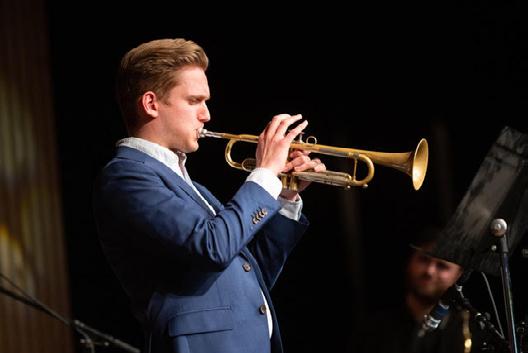
Stafford, Boyer Director of Jazz Studies, selected “Red Braid” to perform at the December 2022 Temple Jazz Band concert and also at Jazz at Lincoln Center’s Jack Rudin Championship in January of this year. For the second consecutive year, Temple finished second at the Rudin Championship, in competition with nine other schools. According to Sapnar, “Red Braid” will be published in the near future by BCM+D Records, the official record label of the Boyer College of Music and Dance.
Sapnar was previously featured in the June 2022 Jersey Jazz the first time Temple finished second in the Rudin competition. Growing up in Haddonfield, his initial experience with jazz was when his mother gave him an anthology CD that contained many of Duke Ellington’s recordings.
“I put the CD in my boombox,” he said, “and listened to the recordings for hours. It’s been my passion ever since.”
In middle school, Sapnar began playing trumpet, inspired by the school band director, Steve Uibel,
20 JUNE 2023 JERSEY JAZZ NJJS.ORG
Banks Sapnar
and by Louis Armstrong. Uibel was his first trumpet teacher. “I was incredibly lucky to have such a great early foundation on the instrument with somebody who had a lot of experience playing,” Sapnar said. But, “the reason I picked up the trumpet in the first place was Louis Armstrong. His energy and joy was so contagious to me, and listening to his music made me feel like I was on top of the world. I also listened to a lot of Dizzy Gillespie as a kid.”
His current biggest influence on trumpet is Stafford. “He is my favor-
ite living trumpet player,” Sapnar said, adding that other influences include Nicholas Payton, Theo Croker, and John Swana (another teacher).
In high school, Sapnar was chosen for the National Association for Music Education National Jazz Ensemble, directed by JALC Vice President of Education Todd Stoll.
He also attended the Wynton Marsalis Summer Jazz Academy, “my first opportunity to work with and learn from Jazz at Lincoln Center Orchestra members including (trumpeter) Marcus Printup, (trumpet-
“ HE HAS A BIG BEAUTIFUL TRUMPET SOUND AND A SUBSTANTIAL REPERTOIRE OF SONGS.”
er) Kenny Rampton, (trombonist) Chris Crenshaw, and (trombonist) Vincent Gardner. SJA is also where I first met Terell Stafford.” Sapnar was a member of the New Jersey All State Jazz Band in 2018 and 2019.
This summer, like LaRouech, Sapnar will be going to the Jazz Aspen Snowmass JAS Academy, and, in the fall, he’ll return to Temple to study for his Masters in Jazz Studies. He hopes to use his jazz education “to further spread the message of jazz and music at large to as many people that I possibly can.”
Sapnar feels there is, “a real family vibe at Temple. All the faculty are regularly on campus and always go above and beyond their job description.” Barth, who recommended Sapnar for an NJJS Scholarship, has worked with him in two main areas: “His jazz playing and his arranging/ composing. He is extremely accomplished in both areas for a young
man of his age. He has a big, beautiful trumpet sound (for which I take no credit) and a substantial repertoire of songs, well balanced between standards from such film and Broadway composers as Gershwin, Porter, Carmichael, etc. and jazz composers from the swing era through more modern styles. He has an excellent time feel and a very strong melodic sense, as well as a fine understanding of jazz harmony. I find his playing to be soulful and exciting and deeply informed by jazz tradition.”
Joseph Foglia
Dr. David Demsey, William Paterson Coordinator of Jazz Studies, strongly recommended saxophonist Foglia, a sophomore, for an NJJS Scholarship, and according to Foglia, Demsey was largely responsible for his decision to travel from Raleigh, NC, to attend WPU.
“My college application process,”
21 JUNE 2023 JERSEY JAZZ NJJS.ORG
RISING STARS
RISING STARS
Foglia recalled, “was hindered a little bit by the pandemic. I was constantly put off by how the bigger schools I got into wouldn’t respond to emails and weren’t interested in letting me tour, yet wanted me to commit to the school blindly. It really stuck with me when Dr. Demsey called me personally to tell me of my acceptance into the Jazz program and set up a
date for me to come tour the school.
I was really blown away on my tour and made my decision immediately when I saw how Professor Charlap (Bill Charlap, Director of Jazz Studies) worked with one of his combos.”
As a student, Demsey said, Foglia “is an inspired learner and is intensely involved in continuing to grow academically as well as musically. He has

a good foundation on his instrument, and he has a very strong and rapidly expanding jazz vocabulary. He has gotten deeply involved as a writer/ arranger, and he has already brought very successful arrangements into our Jazz Orchestra rehearsals.”
Foglia is studying saxophone under tenor saxophonist Rich Perry, a longtime member of the Thad Jones/Mel Lewis Orchestra (now the Vanguard Jazz Orchestra). “He is a masterful player,” Foglia said, “and a wonderful teacher, with a unique concept and style. I am also grateful to Professor (and bassist) Steve LaSpina. I have been in a combo with him almost every semester at this point, playing my original compositions; and he gives the group just enough freedom to experiment, while at the same time listening with a critical ear.” Foglia is also a member of the WPU Chamber Jazz Quintet directed by alto saxophonist Vincent
Herring. The Chamber Jazz Quintet performed on April 9 at WPU’s 100th birthday celebration for Thad Jones.
Growing up in Raleigh, Foglia became interested in jazz in middle school because the school band director, Renee Todd, “created an encouraging learning environment. It was seen as a big deal to be in the middle school jazz band, and all of my friends wanted to be in it, so, naturally, I wanted to do it, too. She really started me from a young age thinking that jazz was cool.” Foglia’s first saxophone teacher was Peter Lamb, a local player on the North Carolina scene. In high school, he took some lessons from Stephen Riley, who leads the saxophone section in pianist Marcus Roberts’ big band.
Foglia’s first influences on saxophone were Charlie Parker and Dexter Gordon. “I would always listen to Bird and practice out of the omnibook (note-for-note transcriptions
22 JUNE 2023 JERSEY JAZZ
Joseph Foglia
RISING STARS
for instrumentalists) in high school. One Christmas, my parents got me the CD box set of the Dex Blue Note records. Eventually, I got into Sonny Rollins and Joe Henderson, and I’m on a bit of a Coltrane kick now.”
On June 2, back in North Carolina for the summer, Foglia will begin running a weekly jam session every Friday at the Berkeley Café in downtown Raleigh. “I also have a date at the Sharp Nine Jazz Gallery in Durham on July 11.”
Grace Fox
Although Grace Fox began playing trumpet at age 11, it was Earl Phillips, the band director at Cherokee High School in Marlton, NJ, who “lit the spark to my fuse.” Phillips is a bass trombonist who leads his own big band in the Philadelphia area and also teaches at Rowan University. According to Fox, “He gave me the chance to experiment with the
jazz band at school, letting me lead them in a rehearsal of my own charts. I don’t think I would be a confident bandleader today if he had not given me that experience at a young age.”
When Fox began her collegiate career at Rutgers’ Mason Gross School of the Arts in the fall of 2020, she discovered the documentary, The Girls in the Band, about the history of all-female big bands. “It started with The International Sweethearts of Rhythm,” she said, “and ended in the current day with Sherrie Maricle and her DIVA Jazz Orchestra. This was the first time I had seen most of the women featured in this film and seeing them lead a jazz orchestra was incredibly inspiring. As the credits rolled, I wondered who the next generation of women in jazz was, and how they would add to the history of big band music.”
At Mason Gross, Fox studied virtually with trumpeters Tatum Green-
 Grace Fox
Grace Fox
blatt and Joe Mosello. “Joe Mosello was my first trumpet teacher,” she said. “He was a kind and supportive figure to me during the height of the pandemic. When both of us got vaccinated, he drove to my house a few times for lessons, and he helped me find the mouthpiece that I still play on today. Tatum gave insight on the etiquette of a professional jazz musician—how to be on time, dress correctly, know the music, and work
well with others. These are very important things that are rarely taught.”
Greenblatt, who recommended Fox for an NJJS Scholarship, remembers his first reaction to her. “Though we were restricted by the limitations of Zoom lessons, I was tremendously impressed by Grace, both as a musician and student. She was uniquely accomplished as an instrumentalist, particularly within the specialized skill of playing lead trumpet. But it was her drive to improve in other areas that struck me the most.”
In 2021, Fox was given the opportunity to record an album with an independent label, Blue Collar Records. “The label wanted the album to include a small combo with all of my original music,” she said. “Although I was honored and thankful for the opportunity, I couldn’t help but see the end credits of that documentary play back in my head over and over again. I pitched an idea of an
23 JUNE 2023 JERSEY JAZZ NJJS.ORG
RISING STARS
all-female jazz orchestra composed of the next generation of women in jazz. Thankfully, it was well received, and, through the power of social media, came the Grace Fox Big Band.”
Fox has transferred from Mason Gross to the Manhattan School of Music, and the album, Grace Fox: Eleven O’Seven, was recorded over four days at Philadelphia’s Milkboy The Studio; it was released in March 2022. The band members were recruited from all over the country via Instagram. One of the first musicians enlisted was trumpeter Kellin Hanas, who also attends MSM. Others include trumpeter Summer Camargo (a Jersey Jazz Rising Star in May 2021), alto saxophonists Veronica Leahy and Jade Elliott, and pianist Naomi Nakanishi.
Reviewing the album for the UK’s Jazz Journal, Jeremy Isaac wrote, “This auspicious debut from an all-female outfit scores on several levels: it redresses the question of a male-heavy
jazz music industry; it boasts both strong original compositions and solid arrangements of covers; and it introduces a tranche of talented new players who combine enthusiasm and experience to deliver a competent, disciplined performance.” At 5 p.m. on Thursday, August 3, the Grace Fox Big Band will be performing as part of Jazz at Lincoln Center’s Jazz in Times Square series, held at 46th and Broadway. “I am so excited to share some music from our album,” she said, “as well as a few new originals and arrangements.”
At MSM, Fox is studying with trumpeters Jon Faddis and Ingrid Jensen, who is Dean of the Jazz Department. Who were Fox’s earliest inspirations? “Earl put me onto Thad Jones, Duke Ellington, Count Basie, and Maynard Ferguson. I am also heavily inspired by the Maria Schneider Orchestra, James Argue’s Secret Society, the DIVA Jazz Orchestra, and the Roy Hargrove Big Band.”

NJJS.ORG 24 JUNE 2023 JERSEY JAZZ
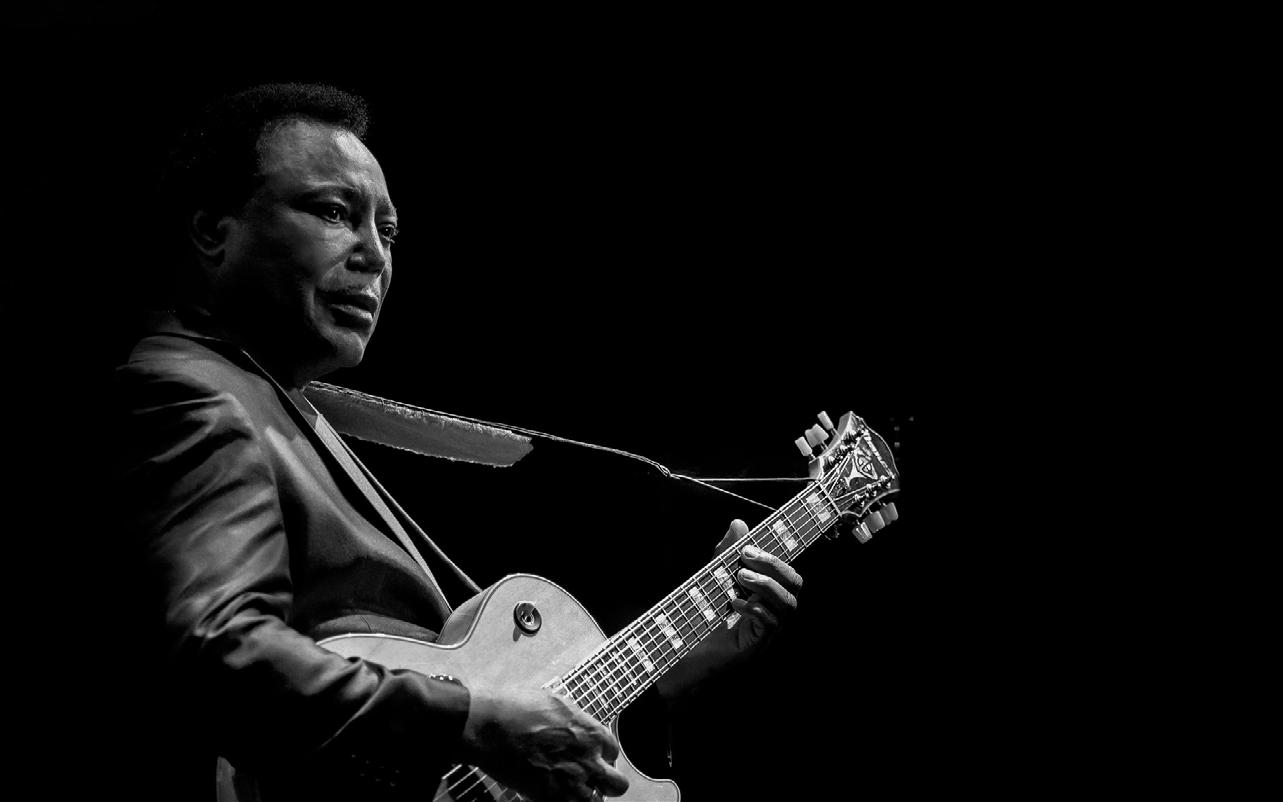
George Benson: ‘We Don’t Get Back as Often as We Would Like’
Over Time, Benson Became as Celebrated for His Singing as for His Virtuosic Guitar Playing
BY JAY SWEET
With a career that has spanned more than seven decades, George Benson has won 10 Grammy Awards and has had four top 10 albums on the Billboard Charts, including the Number 1 album Breezin (Warner Brother: 1976), which has sold an estimated 10 million records. At age 80, Benson is on tour, and spoke to Jersey Jazz about his upcoming performance at the New Jersey Performing Arts Center on June 2.
Reflecting on his early childhood, he recalled, “I played ukulele first. My stepfather was a guitar player, but my hands were too small to play guitar. He found a uke in the garbage; it was all cracked up, so he glued it and taught me a few chords. I made a small fortune with it. When I turned nine, they bought me a guitar for $15. I started working the street corners with it.”
JAZZ AT NJPAC JERSEY JAZZ JUNE 2023 25 NJJS.ORG
JAZZ AT NJPAC
Benson grew up in Pittsburgh, which served as a breeding ground for top jazz musicians. As a curious music student, he was well-situated to absorb and develop many opportunities that the city provided. He explained. “Musicians on their way to New York would stop in Pittsburgh because we had the Pennsylvania Turnpike, which connected Pittsburgh to New York. So, musicians from the Midwest—from Kansas City and Chicago—would stop at Pittsburgh because that’s where the jam sessions were. It was a place to tune up on the way to New York because we had some great
musicians, and they would jam together. Whenever a new artist who played guitar came to Pittsburgh, I would seek them out and ask questions.”
Despite some advice from local and visiting musicians, Benson was a self-taught prodigy who began playing rhythm & blues music in clubs at a young age. Life changed for him when he first discovered Charlie Parker. “My natural father, who was a musician, was friends with Charlie Parker. I started to get popular in Pittsburgh in the R&B clubs and corner bars. My dad asked me, ‘Why do you keep playing that corny stuff?’ I said, ‘Because
“ JACK MCDUFF CAME TO PITTSBURGH AND NEEDED A NEW GUITARIST. ”
that’s what people want to hear.’ He said, ‘Why don’t you play like Charlie Parker?’ I said, ‘Charlie, who?’ He told me, ‘Now I know why you can’t play. So, I made it a point to check out Parker.’
Benson’s first major gig came as a member of organist Jack McDuff’s band. “Jack McDuff came to Pittsburgh and needed a new guitarist because he wanted more blues. Someone recommended me. I met him at a club; sure enough, he liked me. I didn’t know why he liked me, but he hired me to go on the road with him and fired me the first night, saying, ‘I don’t think you are going to make it with our group, but I’ll keep you in the band until we get to New York. I think I know of another band that will love you.’ When his manager heard the band, he asked Jack, ‘Did you say you were going to fire this kid?’ I was only 19 then. Jack said, ‘Yeah, why?’ The manager said, ‘You can’t fire him because your band sounds 10 times better than the last
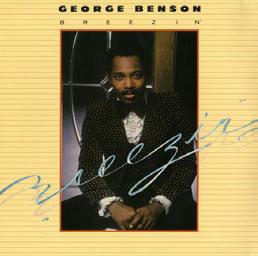
time I heard you.’ He said, ‘I suggest you get in the studio and make an album,’ which we did. It was a lightweight hit, and it started me on a new career.”
Benson then made his first solo album, New Boss Guitar. (Prestige: 1964). When asked about the album and the circumstances regarding the title, he remembered that, “I had just bought a brand new guitar, a Gibson Super 400. It was a fabulous guitar. I never thought I could buy a $1,000
26 JUNE 2023 JERSEY JAZZ NJJS.ORG
guitar. Jack’s manager saw it and said, ‘That’s a boss guitar.’ So, they named the album based on my new guitar. It had nothing to do with my playing. It had nothing to do with Wes Montgomery’s album Boss Guitar (Riverside, 1963). Nobody would have the nerve to say they could play better than Wes Montgomery. There was no such person on the planet.”
In the late ‘60s and ‘70s, Benson made several albums with Creed Taylor ’s CTI jazz label. His 1974 CTI
album, Bad Benson, reached Number 1 on the Billboard jazz chart. Other popular recordings included Good King Bad and Benson & Farrell (with saxophonist Joe Farrell), The Other Side of Abbey Road (1969), and White Rabbit (1972). (See Benson’s comments about CTI arranger Don Sebesky, page 43).
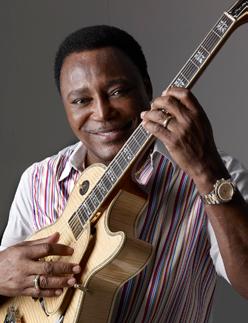
Over time Benson became as celebrated for his singing as for his virtuosic guitar playing. But, on his earlier recordings, he did not sing much. When asked why, he said, “Jack felt people would favor a mediocre singer over a great musician. Even on my early solo records, I was known as a guitar player”.
Santana at Prudential Center on June 21
If you are a fan of legendary guitarists, you can also check out Carlos Santana, who will perform at the Prudential Center in Newark on June 21. By blending Latin music, jazz, rock, and blues, Santana has been dazzling listeners since his 1969 performance at Woodstock. The 75-year-old Rock & Roll Hall Of Famer had to cancel several shows in 2022 due to medical issues, but is eager to get back to performing.
Benson’s big breakout success as a vocalist came in 1976 with the top 10 single “This Masquerade” from Breezin’ I asked him if the success of the album and song was a surprise. “Breezin’ surprised everybody,” he said. “We were just enthusiastic players, and we had a bad band. When we put ‘This Masquerade’ on the album, they said, ‘Man, this is different.’ When I put the vocal on, ‘This Masquerade’ took that album to the moon!” With
the success of Breezin, Benson began singing more and blending more R&B along with jazz to continue to produce hit albums such as In Flight (Warner Brothers, 1977), Weekend In L.A. (Warner Brothers, 1977), and Give Me The Night (Warner Brothers, 1980). Although he could not maintain the incredible run of commercial success he had in the late ‘70s and ‘80s, Benson continued to record and impress audiences for the next four decades.
When asked about his upcoming NJPAC performance, Benson answered, “We have a great band; we look forward to playing to our New Jersey audience; we don’t get back here as often as we would like, so this is a rare but wonderful opportunity.”
Although he spends most of his time in Arizona, Benson still owns a home in Englewood, NJ, that was designed by Frank Lloyd Wright. In 2021, he was inducted into the New Jersey Hall of Fame in the Performing Arts category.
27 JUNE 2023 JERSEY JAZZ NJJS.ORG
JAZZ AT NJPAC
Melissa Aldana Will Preview Music from Her Next Blue Note Album
Star-Filled Lineup Also Includes Samara Joy, Joey Alexander, and Maria Schneider
BY SANFORD JOSEPHSON

When tenor saxophonist Melissa Aldana leads a quartet on June 16 as part of the McCarter Theatre Jazz in June series, the program will be “a mix of some old things and some new things, and some things we didn’t even record.”
The “old things” will be from 12 Stars, Aldana’s first Blue Note album, released in January 2022. The “new things” will be from a second Blue Note album, recently recorded, which will be released in March 2024. “I’m not sure about the title yet,” she added.
The 34-year-old Aldana was interviewed by Jersey Jazz two years ago, just after her Blue Note signing was announced (Jersey Jazz, June 2021). She was just beginning to resume live, in-person performances with her quartet, which includes Norwegian guitarist Lage Lund, drummer Kush Abadey, and bassist Pablo Menares. Lund is currently in Norway, so Aldana, Abadey, and Menares will be joined at
28 JUNE 2023 JERSEY JAZZ
M c CARTER’S JAZZ IN JUNE
PHOTO BY EDUARDO PAVEZ GOYE
Melissa Aldana
the McCarter concert and other June performances by pianist Lex Korten.
The music on 12 Stars was a collaboration between Aldana and Lund. Reviewing the album for AllMusic, Matt Collar wrote, “There’s a warm, cocoon-like quality to Aldana’s compositions as she envelops herself and her audience in shimmering tonal cascades . . . Aldana plays with an easy warmth that belies just how athletic and harmonically adept her improvisational skills are. With 12 Stars, Aldana puts all of her colorful sonic and emotional textures on display.” Added Stereophile Magazine: “There may have never been a major tenor player who shouts less and who sounds less egocentric than Aldana. The music is contemplative and searching, even grasping. Its quietude at the moment is deep, yet its intensity burns like an underground fire. Her horn is the voice of her heart.”
Aldana’s quartet will be perform-
ing in Brazil in July, “and we’re doing some South American tours in September,” she said. She’s also performing as a special guest with a big band at the Pori Jazz Festival in Finland in July. And the quartet will be at the Detroit Jazz Festival in September.
The future Blue Note release, she added, “is the newest thing. But everything is just an extension of what I’ve been doing these past few years.” That includes winning the Thelonious Monk International Jazz Saxophone Competition in 2013, performing with Renee Rosnes’ Artemis band at the Newport Jazz Festival in 2018, and receiving a Grammy nomination for her composition, “Elsewhere” on her 2019 Motema Music album, Visions.
When Aldana was signed by Blue Note in 2021, Don Was, the label’s president, said, “Her vibrant artistic vision, mastery of her instrument, and her deep groove make Ms. Aldana a perfect exponent of the Blue Note ethos.”

29 JUNE 2023 JERSEY JAZZ NJJS.ORG
M c CARTER’S JAZZ IN JUNE
Samara Joy
PHOTO BY MEREDITH TRUEX
Joining Aldana on the Jazz in June schedule will be Grammy-winning vocalist Samara Joy (June 2), pianist Chucho Valdes and multi-reedist Paquito D’Rivera (June 9), pianist Joey Alexander (June 10), and the Maria Schneider Orchestra (June 17). There will also be a special family concert, the morning of June 3, featuring clarinetist/composer Oran Etkin.
Joy comes to Princeton on the heels of two big Grammy wins this year—Best Jazz Vocal Album for her September 2022 Verve recording, Linger Awhile; and for Best New Art-
ist (regardless of category). Linger Awhile received well-deserved universal praise in the music media. London Jazz News’ Adam Sieff described it as “a classic sound that could have been recorded anytime since Norman Granz founded Verve in 1956,” adding that, “Samara Joy sings some of the best jazz music you can hear today.”
AllMusic’s Matt Pierson wrote, “Joy brings a dusky warmth to standards like ‘Guess Who I Saw Today,’ ‘Misty,’ and an achingly slow rendition of ‘I’m Confessin’ (That I Love You).’ Particularly notable is

her vocalese take on trumpeter Fats Navarro’s ‘Nostalgia,’ for which she wrote her own romantic lyrics, including some for the legendary bebop trumpeter’s original 1947 solo.”
“
LINGERAWHILE RECEIVED WELL-DESERVED PRAISE IN THE MUSIC MEDIA. ”
When I interviewed Joy for the July/August 2021 issue of Jersey Jazz, it was more than 1 ½ years after she won the New Jersey Performing Arts Center’s Sarah Vaughan International Vocal Competition, aka The Sassy Awards, in November 2019. The promotional efforts and performance schedule that would normally have followed that honor were delayed by
Covid; and she was embarking on a performance schedule that included the Umbria (Italy) Jazz Festival, William Paterson’s Summer Jazz Series, Philadelphia’s South Jazz Kitchen, the Jazz Forum in Tarrytown, NY, and a CD release party at the Jazz Gallery for her first album, Samara Joy, on the Whirlwind Recordings label.
Joy talked to me about some of the standards she selected for Samara Joy. One was the Jimmy Sherman/Jimmy Davis/Ram Ramirez song, “Lover Man”, which she discovered when she was studying at SUNY Purchase’s
30 JUNE 2023 JERSEY JAZZ NJJS.ORG
M c CARTER’S JAZZ IN JUNE
Paquito D’Rivera and Chucho Valdes
Conservatory of Music. She was looking up videos when she came across Sarah Vaughan’s live performance of it. “When I heard the way she was singing the song, the way she interpreted the song, it made the story so much clearer,” Joy said, adding that, “the songs I sing have to tell stories. Otherwise, you’re just singing a bunch of notes.”
Other songs on Samara Joy include Hoagy Carmichael’s “Stardust”, Jimmy Van Heusen’s “But Beautiful”, and “If You’d Stay the Way I Dream About You” (Arthur Herzog, Jr./Irene Kitching). “Stardust”, she said, “is just one of those songs you have to sing. It must be one of the most recorded standards.” She found “But Beautiful” and “If You’d Stay the Way I Dream About You” on Torchy, a 1956 Decca album by Carmen McRae.
Joy’s success was probably not surprising to pianist Peter Malinverni, who is Associate Professor of Jazz Studies, Piano, at SUNY Purchase.
When I interviewed him in 2021, he said Joy “is lit from within and sings as the vessel for joy that she truly is.”
Valdes and D’Rivera released an album called Chucho Valdes/Paquito D’Rivera Reunion Sextet on the Sunnyside Records label in July 2022. Calling them, “Two of the brightest stars in the Cuban firmament,” DownBeat’s Paul de Barros wrote that the album, “bursts with
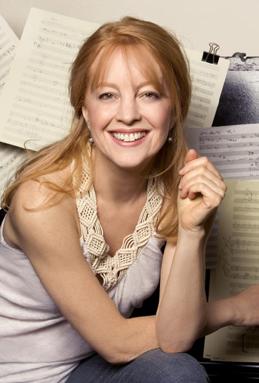
ebullient abandon as well as the heart-on-sleeve candor of old friends reuniting in their autumn years.”
In 2013, the 10-year-old Indonesian pianist Joey Alexander was invited by Wynton Marsalis to perform at a Jazz at a Lincoln Center Gala. Alexander subsequently moved to New York City and released his debut album, My Favorite Things, in 2015 on Motema Music. His sixth album, Origin, all original compositions, was released in July 2022 on the Mack Avenue label. Peter Jones, reviewing it for AllAboutJazz, wrote that Alexander, “demonstrates a growing emotional maturity that has added depth to his playing and thoughtfulness to his compositions.”
National Endowment for the Arts Jazz Master Maria Schneider has won seven Grammy Awards and has been nominated for 14. Her latest album, Data Lords (ArtistShare: 2020) garnered two Grammys, was
a Pulitzer Prize finalist, and was named Jazz Album of the Year by the Jazz Journalists Association and National Public Radio. Reviewing the album for London Jazz News, Mike Collins said, “Schneider’s writing is remarkable; the performance she conjures with the orchestra in places is quite extraordinary.”
In 2011, clarinetist Oran Etkin won a Grammy with other artists for an anti-bullying compilation CD, All About Bullies … Big and Small. Etkin plays both jazz and world music and is the developer of a music-education program for children called Timbalooloo. His latest album is Finding Friends Far From Home: A Journey with Clara Net (Timbalooloo: 2019).
The McCarter Theatre is located at 91 University Place in Princeton. For more information about Jazz in June or to order tickets, log onto mccarter.org or call (609) 258-2787.
31 JUNE 2023 JERSEY JAZZ NJJS.ORG M c CARTER’S JAZZ IN JUNE
Maria Schneider
PHOTO BY DENA KATZ
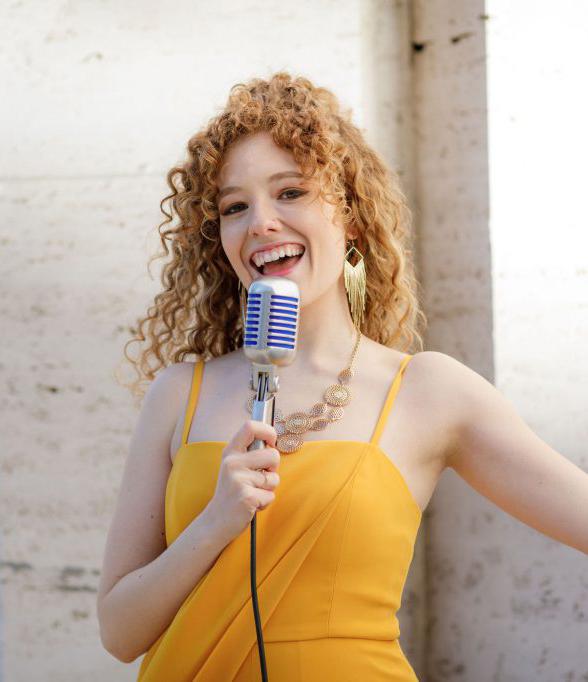
TBlues Alley Ella Fitzgerald
Winner April Varner: ‘I Wanted to Set Myself Apart’
“Her Interpretation of ‘Love You Madly’ was Swingin’ with Great Phrasing and Outstanding Scatting!”
BY SANFORD JOSEPHSON
he 1957 Verve album, Ella Fitzgerald Sings the Duke Ellington Song Book, contained 38 tracks, including some of the best-known tunes associated with Ellington such as “Solitude”, “Satin Doll”, and “I’m Beginning to See the Light”. Contestants in this year’s sixth annual Ella Fitzgerald Jazz Vocal Competition, sponsored by Blues Alley Jazz, were asked to select any three songs from that album for their contest auditions.
The winner, April Varner, decided to challenge herself by picking some of the lesser-known tunes such as Billy Strayhorn’s “Chelsea Bridge” and “Clementine”, and Ellington’s “Love You Madly”. The task was even more formidable because only one of the selections, “Love You Madly”, contained lyrics, combined with scat. “Chelsea Bridge” was sung by Fitzgerald as an instrumental vocal, and “Clementine” was all scat.
32 JUNE 2023 JERSEY JAZZ NJJS.ORG
PHOTO BY TORY WILLIAMS
RISING STAR
“The Ella Sings Duke album, Varner said, “is obviously huge. Looking through that list, I thought ‘What are some songs I know everyone is going to gravitate to?’ I wanted to set myself apart from everyone else in a way I thought was good to showcase my voice. In competitions like this, you want to pick carefully. I wanted to showcase my ability to sing non-lyrical stuff. It’s always fun to try to tell the story without words. ‘Chelsea Bridge’ is a very complex melody, so that was kind of fun and a challenge to emote what the tune is about without lyrics. Now, I have these great tunes that I can use in my repertoire for gigs all the time.”
The strategy worked. One of the judges, Darden Purcell, Director of Jazz Studies, Jazz Voice, at George Mason University, was impressed with Varner’s “beautiful, full-bodied voice, great fluidity between the reg-
isters, and wonderful intonation. Her interpretation of ‘Love You Madly’ was swingin’ with great phrasing and outstanding scatting! She has a wonderful career ahead of her, and I can’t wait to follow her future successes.”
Celebrity judge, vocalist Jane Monheit, described Varner as “an incredibly talented vocalist who has clearly put the work in to understand and express this music on a high level. I will definitely be following along her path and supporting her future music!”
The 26-year-old Varner grew up in Toledo, Ohio, and began taking voice lessons as a classical vocalist at the University of Toledo when she was eight years old. After graduating from high school, she attended Indiana University as a vocal performance major. “I was classically trained,” she said, “and I thought that was my path for a long time. At Indiana, I was in a show choir called The Singing Hoo-
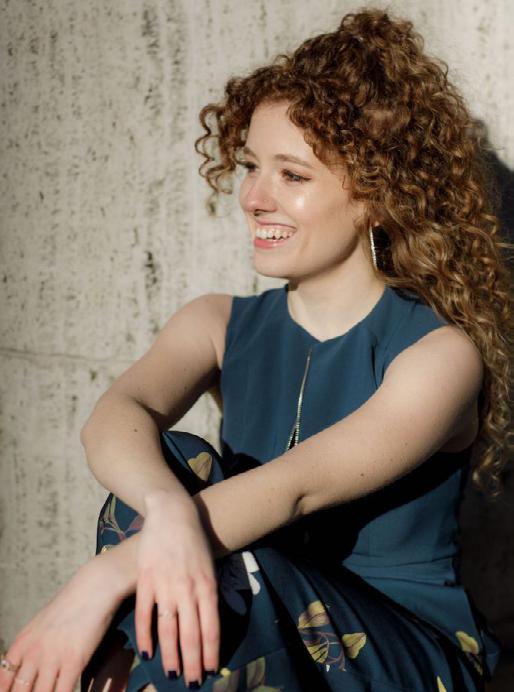
33 JUNE 2023 JERSEY JAZZ NJJS.ORG
PHOTO BY TORY WILLIAMS
RISING STAR
siers. We did all kinds of music in that group—some classical, some modern, and we did some jazz. It was a great outlet for me. I did musicals in high school. I loved theater. I loved dance.”
Duane Davis, the Assistant Director of The Singing Hoosiers, convinced her to join his jazz ensemble, asking her to consider being a jazz singer. Recalled Varner, “I had zero knowledge about jazz. I didn’t like it without even giving it a chance. I did notice, though, that I was getting kind of sick of the classical repertoire. I could not picture myself singing in Italian on a stage. So, I continued in the jazz ensemble, and, finally, I decided, ‘I really like this. This is fun.’ I especially loved the freedom jazz gave. In classical, it’s all written down for you. So, the idea that I could do what I want, the way I want to was just kind of crazy to me. I kept in the group, fell more in love with jazz and
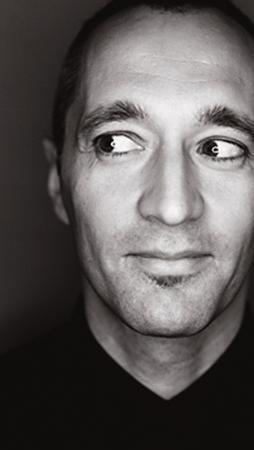
made the decision to become a jazz major at the end of my freshman year. It was the best decision I ever made.”
After graduating from Indiana, Varner moved to New York in August 2020 and began studying for her Masters in Jazz Voice at the Manhattan School of Music, which she earned in May 2022. “I always knew I wanted to move to New York,” she said. “I did my auditions for grad school about a month before everything shut down due to Covid. My first year was a little weird. All of the academic classes were on Zoom, and the combos and bands were in person with masks on. My second year was better, no more masks.”
make connections, how the business works. Theo continues to help me today on pretty much everything.”
Bleckmann said Varner came to him, “already fully formed and ready to take on the world. She really has a voice, and she loves jazz. With April, it’s all about the music. She wanted to be challenged.”
While still at MSM, Varner got her first real gig at Rue B on Avenue B, a club that is no longer in business. “I performed there every two weeks for many months,” she said. Also, during her student days, Bleckmann got her ensemble booked at 55 Bar, another club no longer around. “The vocal students,” she said, “got to perform two or three songs a month.”
Varner’s major jazz vocal influences are, “Obviously Ella. I also studied Carmen McRae a lot. I love her diction when she sings. And, I love her intentionality with the phrasSinger/composer Theo Bleckmann was an important mentor/teacher for Varner at the Manhattan School of MJusic.
At MSM she studied with Grammy-nominated singer/composer Theo Bleckmann. “He is probably the best mentor/teacher I’ve ever had,” she said. “He helped me develop my voice, my style, helped with writing, how to
34 JUNE 2023 JERSEY JAZZ NJJS.ORG
PHOTO BY SUSIE KNOLL
RISING STAR
ing. You can just listen to a recording and picture how she would look singing it. Her voice just emotes so well and tells the story so well. She’s probably my second favorite.” The McRae album she likes the most is Something to Swing About (Verve: 1960). “It’s one of her earliest records,” Varner said, “and I love how witty all the songs are, and they’re not super well-known ones either.
“Nancy Wilson is probably my third favorite,” she continued. “Coming from a classical background, I have a big vibrato, and Nancy does not hold back with her vibrato.” Varner particularly likes Wilson’s 1963
“
Capitol Records album, Broadway, My Way. “I love the arrangements of all my favorite show tunes!”
Recently, Varner released a fourtune digital EP entitled Hummingbird. Available on all streaming services and her YouTube channel, it includes two original compositions and two original vocalese arrangements. She’s currently at work on her first full album, which will be produced by drummer Ulysses Owens, Jr. “We’re getting the band all lined up,” she said, “and the plan is to record it in August and release it in February 2024.” As for current live performances, Varner hosts a weekly jam session on Sun-
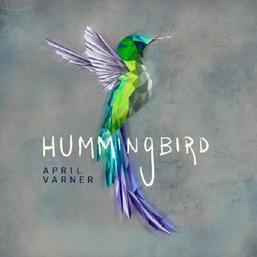
days from 5:30-8 p.m. at a coffee shop called Dear Mama, which is on 129th Street near the Manhattan School of Music. She has also begun singing during brunch, from 1-3 p.m., at Sauce,
an Italian restaurant located on Rivington Street on the Lower East Side.
Varner’s favorite American Songbook composer is Irving Berlin. “Ella Sings the Irving Berlin Songbook (Verve: 1958) is one of my favorites,” she said, adding that, “During the pandemic, I listened to Bill Charlap’s Berlin album, Always (Venus: 2008) religiously. I learned all of the songs.”
JON HENDRICKS IS ONE OF MY FAVORITE VOCALESE ARTISTS. HE’S A HUGE INSPIRATION TO ME. ”
The great vocalese artist, Jon Hendricks, grew up in Toledo, but, as a child, Varner “had no clue who he was. Jon was still alive the first two years I was into jazz, and I had a mutual friend, a photographer in Toledo who was friends with him. But, before I could organize a meeting, he passed away. I’m still kicking myself that the stars didn’t align for that. Jon Hendricks is one of my favorite vocalese artists. He’s a huge inspiration to me. I wish so badly I could have had just one conversation with him.”
NJJS.ORG 35 JUNA 2023 JERSEY JAZZ
FROM THE CROW’S NEST
BY BILL CROW
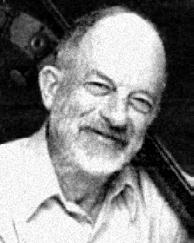
On an interview with saxophonist Gary Bartz that is on YouTube, Gary talks about a time when he and Keith Jarrett were both with Miles Davis. Bartz said he didn’t like the way Jarrett was comping behind him on his solos, saying he felt that Jarrett wasn’t listening to him. He complained to Miles, and Miles told him to complain to Jarrett. He did, and Jarrett stopped comping completely behind Bartz. Bartz was okay with that, but eventually Jarrett went back to his old way of playing odd things behind Bartz’s soloing. Bartz again complained, angrily, to Miles. Miles called Jarrett into the dressing room, and Bartz left while they talked. When they played again, Jarrett was even more elaborate in his accompaniments to Bartz’s solos! Bartz found out later
Bill Crow is a freelance musician and writer. His books include Jazz Anecdotes, Jazz Anecdotes: Second Time Around, and From Birdland to Broadway. This column is reprinted with permission from Allegro , the monthly magazine of AFM Local 802.
that Miles had said to Jarrett, “Gary loves what you’re doing behind him. He wants MORE!” Bartz commented, “Miles liked that kind of tension.”
Lin McPhillips posted this on Facebook. It was written by Elizabeth Gilbert: “Some years ago, I was stuck on a crosstown bus in New York City during rush hour. Traffic was barely moving. The bus was filled with cold, tired people who were deeply irritated— with one another; with the rainy, sleety weather; with the world itself. Two men barked at each other about a shove that might or might not have been intentional. A pregnant woman got on, and nobody offered her a seat. Rage was in the air; no mercy would be found here.
“But as the bus approached Seventh Avenue, the driver got on the intercom. ‘Folks,’ he said, ‘I know you’ve had a rough day and you’re frustrated. I can’t do anything about the weather or traffic, but here’s what I can do. As each
one of you gets off the bus, I will reach out my hand to you. As you walk by, drop your troubles into the palm of my hand, okay? Don’t take your problems home to your families tonight—just leave ‘em with me. My route goes right by the Hudson River, and when I drive by there later, I’ll open the window and throw your troubles in the water. Sound good?’
“It was as if a spell had lifted. Everyone burst out laughing. Faces gleamed with surprise and delight. People who’d been pretending for the past hour not to notice each other’s existence were suddenly grinning at each other like, is this guy serious?
Oh, he was serious.
“At the next stop—just as promised— the driver reached out his hand, palm up, and waited. One by one, all the exiting commuters placed their hand just above his and mimed the gesture of dropping something into his palm. Some people laughed as they did this, some had tears streaming down their faces—but ev-
36 JUNE 2023 JERSEY JAZZ NJJS.ORG
eryone did it. The driver repeated the same lovely ritual at the next stop, too. And the next. All the way to the river.”
Many New York highways and parkways have signs that indicate the amenities that are available at the exits. Besides the signs about food and lodging, and gasoline, there are signs that advise the driver about points of interest. On Long Island’s Northern Parkway, there is one huge blue signboard with large white letters at the top, that reads: ATTRACTIONS AT EXIT
39. The rest of that huge sign is blank. I feel sorry for the folks who live at exit 39.
Tom LaMark posted this story on the Gigs From Hell page on Facebook: “Many years ago, my band was engaged to play a party at a fancy French restaurant that was located in Boston’s Old City Hall. Access was through an alley in the back (of course), and up two floors in the elevator with two fully
loaded rock n’ rollers, PA equipment, stands, lights, full keyboard rig, etc.
“The gig was fine, and my bandmates helped me at the end, wrapping mic cords, folding stands, and the like. I was the last to leave the room with my carts.
I made two trips down and up the elevator, and I left my stuff by the back door. I went upstairs one last time for a double check, a ritual that most of us have learned the hard way. Nothing was left behind. At this point I was dead tired and got in the elevator rather than taking the stairs. But the elevator got stuck between floors.
“I pushed the red emergency button, and a loud bell sounded with no response. I’m not claustrophobic so I felt no panic, I was just annoyed. I did some shouting to no avail. After 10 minutes I picked up the emergency phone behind the little glass door, heard ringing for a long time and finally got an answer. ‘Can I help you?’
“I explained that I was stuck in the
elevator and that no one was around to help. He asked for the address, and I gave it to him from the inspection certificate. He then asked me what city I was in. What city? Really? He explained to me that he was in Atlanta. What?? He said he was going to contact somebody locally to help me.
“Twenty minutes passed and nothing happened. I started banging on the door, and the kitchen clean-up crew finally heard me. They came and pried the doors open. Still wearing my tux, I climbed up as far as I could, and they pulled me out. I thanked them and went down the stairs, and I was happy to see that my equipment was still there by the unlocked door. When I got home, I slept well.”
Warne Marsh’s widow Geraldyne posted this online: “Warne loved Zoot. We went to hear him play, get this, on our wedding night! Zoot said, ‘Warne, what the hell are you doing here?’ I loved him from that moment.”

NJJS.ORG 37 JUNE 2023 JERSEY JAZZ
FROM THE CROW’S NEST
OTHER VIEWS
BY JOE LANG
Among the record labels that recorded early jazz, one that is particularly notable is Gennett Records. Brief background information about Gennett Records is available on Wikipedia, while a deep dive into the interesting history of the label is available in Jelly Roll, Bix and Hoagy: Gennett Studios and the Birth of Recorded Jazz a 1994 book by Rick Kennedy from the Indiana University Press. The artists who recorded for Gennett included the New Orleans Rhythm Kings, Louis Armstrong, Bix Beiderbecke, Hoagy Carmichael, and Jelly Roll Morton. Brent Wallarab, co-leader of the Buselli-Wallarab Jazz Orchestra, has composed and arranged The Gennett Suite (Patios Records—0029) for the orchestra. The suite includes four movements, “Royal Blue,” Blues Faux Bix,” Hoagland”, and “Mr. Jelly Lord,” in which Wallarab has incorporated and reconceived songs associated
with the artists referenced above for his piece. The songs include “Tin Roof Blues,” “Chimes Blues,” “Dippermouth Blues,” “Davenport Blues,” “The Jazz Me Blues,” “Wolverine Blues,” “Star Dust,” “Riverboat Shuffle,” “King Porter Stomp”, and “Grandpa’s Spells.” What Wallarab has created is music written for a modern big band that never loses the essence of the original recordings. The B-WJO is based in Indianapolis and is replete with a roster of fine soloists who augment the wonderfully coherent section work. The music on this album should have wide appeal. (Release Date: June 9, 2023) BWJazzOrchestra.com
Tenor saxophonist Larry McKenna is simply one of the finest sax players in jazz. Since he has spent most of his professional life playing in and around his hometown of Philadelphia and has recorded only a handful of

albums as a leader, his name is not as widely known as it deserves to be. He is definitely top tier. Give a listen to World on a String (BCM+D Records), and you will understand why he is so highly regarded. McKenna is joined on this nine-tune program by Jack Saint Clair on tenor sax, Silas Irvine on piano, Joe Plowman on bass, Dan Monaghan on drums, Megan Woodard on oboe and English horn, Al-
berta Douglas on violin, Justin Yoder, Nellie Smith, and Chen Chen on violins, and Gloria Galante on harp. This is McKenna’s first recording with strings, and it is a natural combination. His song list concentrates primarily on ballads like “I’ve Got the World on a String,” “But Beautiful,” and “I Love You, Samantha”. On “Stompin’ at the Savoy” and his own “Samba De Else,” he demonstrates that he is equally comfortable at any tempo. No matter what he is playing, his innate sense of swing always shines through. Boyer.Temple.edu
Wayne Alpern has one foot in the jazz world and the other in classical music. On Saxology (Henri Elkan Music) he has arranged 18 selections for the New York Saxophone Quartet with Steve Kenyon on soprano sax, Todd Groves on alto sax, Dave Noland on tenor sax, and John Winder on bari-
38 JUNE 2023 JERSEY JAZZ NJJS.ORG
OTHER VIEWS
tone sax. This is a chamber group that gives Alpern’s straight-ahead jazz charts an undertone of classical feeling. He has selected a varied program of songs including standards, such as “All the Things You Are,” “Fascinating Rhythm,” and “It Never Entered My Mind”, a few jazz tunes such as “Anthropology”, “Joy Spring”, and “Li’l Darlin’”; some Broadway selections such as “Do Re Mi,” “Lonely Goatherd”, and “People”; a pair of Beatles tunes, “Hide Your Love Away” and “When I’m Sixty-Four”; and the beloved aria “Nessum Dorma”. This is an eclectic mix that demonstrates the versatility of the players and the arranger. WayneAlpern.com
When you hear the term West Coast Jazz, the Pacific Jazz label comes to mind as one of the premier outlets for this music. Pianist Dred Scott is currently based in New York City
but spent much of his earlier career in San Francisco. A friend from his San Francisco days, architect Denny Abrams, informed Scott that he had built a studio north of San Francisco and suggested that Scott come out to record an album. He enlisted tenor saxophonist Eric Crystal, bassist John Wiitala, and drummer Smith Dobson, San Francisco colleagues. The result is The Pacific Jazz Group (Ropeadope—719), which nicely captures the West Coast sound that was a major element of the jazz scene in the 1950s. They chose four tunes by Gerry Mulligan, “Line for Lyons,” “Festive Minor,” “Nights at the Turntable”, and “Utter Chaos,” plus Bernie Miller’s “Bernie’s Tune,” Russ Freeman’s “Maid in Mexico”, and Shorty Rogers’ “Casa De Luz.” It is pleasant to hear these swinging players revisit some classic jazz tunes with vigor. (Release Date: June 23, 2023) DredScott.com
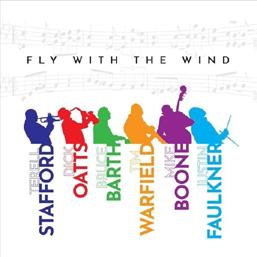
Fly With the Wind (BCM+D Records)
finds the Temple Jazz Sextet playing a quartet of tunes written by Philadelphia jazz giants. The sextet includes six members of the jazz faculty at Temple University: trumpeter Terell Stafford, alto saxophonist Dick Oatts, tenor saxophonist Tim Warfield, pianist Bruce Barth, bassist Mike Boone, and drummer Jason Faulkner,. The tunes are “All Members” by Jimmy
Heath, “Fly With the Wind” by McCoy Tyner, “Naima” by John Coltrane, and “Yes I Can, No You Can’t” by Lee Morgan. The group is tight, with each member an accomplished soloist, as were the players who composed the songs. Barth sketched out the charts, and the band expanded upon them with its highly developed improvisational skills Boyer.Temple.edu
Saxophonist Ray Blue’s new album, #People (Jazzheads—1265), is a 10tune collection with a shifting lineup of players. The band includes Blue on tenor sax, Kenny Barron or Sharp Radway on piano, Jeff Barone on guitar, Essiet Okon Essiet on bass, and Alvester Garnett or Steve Johns on drums, plus trumpeter Eddie Allen on two tracks and Bobby Sanabria adding percussion on four tracks. Five of the tracks, Blue’s originals “Cross Country Spirit,” “Always With a Purpose” and
39 JUNE 2023 JERSEY JAZZ NJJS.ORG
“Dark Berries,” Jobim’s “Dreamer “and David Newman’s “Hard Times,” have a basic tenor sax, piano, guitar, bass and drums format with Allen and Sanabria contributing occasionally. There are two duo tracks, Blue and Barron on “In a Sentimental Mood,” and Blue and Essiet on “We’ll Be Together
Again,” while Blue, Essiet and Johns form a trio for Blue Mitchell’s “Funji Mama,” and a quartet of Blue, Barron, Essiet and Johns handles “People” and “When Sunny Gets Blue.” Blue’s tone is warmly expressive on the ballads and he swings out with gusto when the tempo increases. (Release Date: June 9,2023) JazzHeads.com
Hot New York Minutes (Ignoramus Music—001) is a 10-track release from the Kevin O’Connell Quartet. O’Connell is a Chicago-based pianist who was approached four years ago by saxophonist Adam Brenner about coming
to New York and renewing the musical partnership that they had when O’Connell was on the New York scene in the 1980s. They enlisted Paul Gill on bass and Mark Taylor on drums and set about not only jamming, but recording some tracks. A year later, they met again to lay down some more music. It’s a mix of three O’Donnell originals, two by Brenner, and four other jazz tunes, “Newest Blues” by Cedar Walton, “Choose Now” by Tadd Dameron and a couple of Bill Lee compositions, “Biskit” and “A Thought,” plus “For Heaven’s Sake,” a pop tune from the late 1940s. The music basically fits into the hard bop genre. Brenner plays alto and tenor saxes, and has a full, robust sound. O’Connell is imaginative at the keys. Gill, who is a nimble soloist, and Taylor lay down rhythmic support that keeps things steady and tight. After several decades as a professional jazz pianist,
O’Connell finally has his first release as a leader, and it proves to be worth the wait. KevinOConnellPiano.com
The Institute if Jazz Studies at Rutgers-Newark houses the Mary Lou Williams collection. Vibraphonist Cecilia Smith has spent much time absorbing the life and music of Williams at the IJS library. Williams was a major jazz figure from the 1930s on
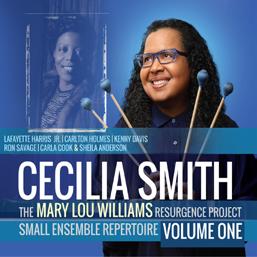
into the 1970s as a pianist/composer-arranger, as well as a mentor to many to musicians such as Thelonious Monk and Dizzy Gillespie at the time when bebop was emerging on the scene. Smith has recently released The Mary Lou Williams Resurgence Project, Volume 1: Small Ensemble Repertoire (innova Recordings - 1 089), the first in what she plans to be a series of albums devoted to music related to Williams. Her musical partners are Lafayette Harris Jr. and Carlton Holmes on piano and organ, Kenny Davis on bass, and Ron Savage on drums. Carla Cook adds vocals on “Tell Me How Long the Train’s Been Gone” and “What’s Your Story, Morning Glory,” while Sheila Anderson offers a spoken-word performance of the words written by Dr. Tammy Kernodle for “Spiritual 2—
Who Was Mary Lou Williams?” Smith has created a couple of musical sketches of Williams’ “Truth Be Told for
40 JUNE 2023 JERSEY JAZZ NJJS.ORG
OTHER VIEWS
OTHER VIEWS
MLW” and “100 Years of MLW.” The other selections are “Body and Soul,” “St. Louis Blues,” Billy Taylor’s “It’s a Grand Night for Swinging”, and a Williams original dedicated to her friend Doris Duke, “Miss D.D.,” included here in two performances, one a studio take and one a live concert performance.
Williams was a creator who covered a lot of musical territory, and Smith has chosen a program that sheds light on many aspects of the Williams musical personality Innova.mu
From the opening notes of “As Long as There’s Music” on The Trio—Vol. 3. (Dave Bass Music- 003), the listener is drawn into the welcoming pianism of Dave Bass. His eclectic and consistently engaging program encompasses three Bass originals; five jazz gems, “Criss Cross” and “Played Twice” by Thelonious Monk, “Israel” by John Carisi, “Blood” by Annette Peacock,
and “If You Could See Me Now” by Tadd Dameron; a pair of standards, “As Long as There’s Music” and “With a Song in My Heart;” a bolero, “El Ciego (The Blind)” by Armando Manzanero; and a tango, “Libertango” by Astor Piazzolla. The original tunes by Bass fit comfortably within the program of established selections. He is supported by bassist Kerry Kashiwagi and drummer Scott Gordon, with occasional contributions by guitarist Barry Finnerty. No matter the tempo, Bass and his partners are as empathetic a team as could be desired.
Tomas Janzon is a Swedish-born jazz guitarist who currently makes his home base in New York City. On Nomadic (Changes Music—115) he is joined by vibraphonist Steve Nelson on six of the 11 tracks, while Hillard Green or Jeff Littleton is in the bass slot and Chuck McPherson
or Tony Austin fills the drum seat. Four nifty original tunes by Janzon are found on either side of the three tracks of jazz standards, “Search for Peace” by McCoy Tyner, “Valse Hot” by Sonny Rollins, plus a medley of Lee Konitz’s “Subconscious-Lee” and Tadd Dameron’s “Hot House.”
On the tracks with Nelson present, there is a natural telepathy passing between Nelson and Janzon. The trio tracks put Janzon’s tasteful and consistently engaging guitar artistry out front while his partners are right there with him every note of the way. Nomadic is a musical journey that takes several paths, but ends up satisfyingly complete at its final destination. TomasJanzon.com
In the voice of Melissa Stylianou, there is a crystal purity, as you will hear on Dream Dancing (Anzic—0080), a 10-song album with
guitarist Gene Bertoncini and bassist Ike Sturm. Another element in her artistry is a strong jazz feeling. She and Bertoncini have been performing together on occasion since they met at a concert in New York City in 2009. They are a natural pairing, nicely complemented by the presence of Sturm. The program is well chosen and includes “Sweet and Lovely,” “If You Never Come to Me,” “My Ideal,” “Perdido,” “Corcovado” “It Might as Well Be Spring’ and “For Chet,” a Bertoncini original with a wordless vocal by Stylianou” from the trio. There are three duo tracks, “It Could Happen to You” and “Time’s A-Wastin’” by Stylianou and Sturm, and “My One and Only Love,” with Sturm sitting out. Bertoncini has a magic to his playing that is unfaltering. Sturm has a knack for finding just the right notes whether soloing or in support. MelissaStylianou.com
NJJS.ORG 41 JUNE 2023 JERSEY JAZZ
OTHER VIEWS
Marina Pacowski is a vocalist who truly fits into the category of jazz singer. She grew up in Biarritz, France, and started her musical journey as an acclaimed classical pianist. Jazz, however, began to seep into her consciousness, and she started singing along with solos by Charlie Parker and Stan Getz. The draw of jazz and its home base of the United States eventually led her to Los Angeles where she immersed herself in the jazz scene, quickly gaining acceptance thanks to her improvisational artistry. She met trombonist Scott Whitfield at a jam session, and they soon became musical pals. When Pacowski told Whitfield she wanted to record an album, he signed on immediately as co-producer and helped to recruit the strong supporting cast that appears on Inner Urge (Summit—807). She is supported by a trio comprising Josh Nelson, Mark Massey or Bevan Manson on piano, John Clayton or
Mike Gurrola on bass, and Roy McCurdy or Peter Erskine on drums, with a variety of guest soloists. Pacowski has chosen an interesting and challenging program. There are jazz numbers such as “Inner Urge,” “Pensitiva”, and “Solar,” that give her ample opportunity to show her scat chops. Then there are several standards including “My Foolish Heart,” “On Green Dolphin Street,”, and “I’m Old Fashioned”. She also gave a nod to her native land with “La Vie Rn Rose,” and included a too often ignored Alec Wilder/William Engvick gem, “Moon and Sand,” that has found favor with jazz musicians. Pacowski has a vocal quality when singing lyrics that is a blend of Blossom Dearie and Billie Holiday. Her scatting is rangy and intelligent. There are not many debut albums by a vocalist that reach the heights of excellence that Marina Pacowski has achieved on this one. SummitRecords.com
After many years of singing or fronting pop-oriented bands, vocalist Jan Cronin decided to turn to music that she had always had as part of her regular listening experience, jazz and popular standards. She got her feet wet in this genre performing in duo and trio settings in Nashville, the city where she resides. She decided that it was time to record this music, and the impressive result is I Thought About You (Scootermusic), a 10-song program with support from guitarist Andy Reiss and bassist Jim Ferguson. Nine of the 10 tunes are standards, “’S Wonderful,” “The Shadow of Your Smile,” “The Night We Called It a Day,” “I Thought About You,” “My Foolish Heart,” “Peel Me a Grape,” “Cry Me a River,” “Lullaby of Birdland” and “Some Other Time.” The other song is a clever tune co-written by Cronin, “The Scent of Breakfast and You.” JanCronin.com
In Reel Time is the second full album from Montreal-based vocalist Mira Choquette . Her fellow players on the album are pianist Ewen Farncombe, bassist Josh Goldman, and drummer/percussionist Morgan Childs. Her program has standards, “No Moon at All,” “Just One of Those Things” and “What Is This Thing Called Love;” a Harry Belafonte calypso number, “Jump in the Line;” “The Old Country,” a Nat Adderley and Curtis Lewis song; some more contemporary numbers, “There Are Worse Things I Could Do” and “Overjoyed;” and Jacques Brel’s “Ne me quitte pas.” Given the variety of material, Choquette slips seamlessly from song to song, her smooth voice and jazzy sense of phrasing nicely supported by her accompanying trio. Available as a download at mirachoquette@bandcamp.com
NJJS.ORG 42 JUNE 2023 JERSEY JAZZ
Don Sebesky
He Moved Seamlessly from Jazz to Broadway to Symphony Orchestras.
BY SANFORD JOSEPHSON
Don Sebesky, who died April 29 in Maplewood, NJ, at the age of 85, left the Manhattan School of Music in the late 1950s to play trombone in bands led by Maynard Ferguson and Stan Kenton.
He reminisced about those days when I interviewed him in 2008 to update a newspaper article I’d written about Ferguson for a chapter in my book, Jazz Notes: Interviews Across the Generations (Praeger/ABC-Clio: 2009). In addition to playing trombone, Sebesky contributed to Ferguson’s band as a composer and arranger and eventually gave up playing to do that full-time. “Ferguson’s band,” he recalled, “was the smallest it could be and still be considered a ‘big’ band. It had three trumpets, two trombones,
four saxophones, and piano, bass, and drums. Then, Maynard would be the sixth brass player—he could play trumpet, trombone, or French horn. He was great as a high note player, and he had really reached his peak with the Stan Kenton band. Kenton allowed him to do what he did best.
“Everyone wanted to write for Maynard,” Sebesky added, “because he provided a lot of opportunities to write. He allowed guys like me to come up with our own ideas.” Sebesky left Ferguson to join Kenton in 1959, but he kept writing for Ferguson for about 10 years.
Sebesky is perhaps best-known for his work as the house arranger for CTI, the jazz label created by Creed Taylor in the 1970s. Among his popular ar-

43 JUNE 2023 JERSEY JAZZ NJJS.ORG
BIG BAND IN THE SKY
BIG BAND IN THE SKY
rangements for CTI was his work on George Benson’s 1972 recording, White Rabbit. In a Facebook posting after Sebesky’s death, Benson said, “I became aware of Don Sebesky during my early tenure with Creed Taylor and CTI records. Don Sebesky had arranged beautiful music for the great Wes Montgomery and quite a few of the other superstars on CTI, and I was a fan.
“My association with him began with my album, Shape of Things to Come. His sweetening of the arrangements was so tasty and so significant he turned this little country boy into a respected guitar star! And his work on the albums The Other Side of Abbey Road and White Rabbit were one of a kind works of art. The Other Side of Abby Road allowed me to use my singing voice in a way I never dreamed. The controversy from that pivotal point in my career paved the way for my eventual pop success. I admired him from the start, and he never failed to work miracles with my music. He later did a great favor for me. He conducted the New York Symphony Orchestra on a record called My Father, My Son which I recorded for the son of Mr. Mohammed Al Fayed (Egyptian businessman who owned Paris’ Ritz Hotel and Harrods in London). I will always be grateful to the legend, Don Sebesky.” (See interview with George Benson on page 25)
In 1974, Sebesky brought a 12-piece band into New York’s Fat Tuesday’s jazz club to play music from his Crescendo album, Full Cycle. It included his arrangements of Miles Davis’ “All Blues” and John Lewis’ “Django”. In his review for The New York Times, John S. Wilson wrote, “At Fat Tuesday’s, a low-ceilinged, narrow room in which the 12 musicians must be strung out in a line, instrumental separation and clarity are a far cry from the possibilities of a recording studio. But what may be lost in this respect is made up for in the vitality and involvement projected by the musicians and the visual razzle-dazzle of the variety of instruments brought into play.”
Sebesky moved easily from the world of jazz to the world of Broadway. He won a Tony Award for his orchestration of a 1999 revival of Kiss Me Kate and shared a Tony in 2015 for orchestration of An American in Paris. He also won three Grammy Awards—in 1999 for his arrangement of Bill Evans’ “Waltz for Debby” on his RCA Victor album, I Remember Bill: A Tribute to Bill Evans and in 2000 for Best Instrumental Composition and Best Instrumental Arrangement, for his “Joyful Noise Suite”.
Another facet of Sebesky’s composing and arranging career was his skill at combining jazz and

NJJS.ORG 44 JUNE 2023 JERSEY JAZZ
JAZZPROMOSERV ICES.COM WE GET THE WORD OUT J i m E i g o J a z z P r o m o S e r v i c e s 2 7 2 S t a t e R o u t e 9 4 S o u t h # 1 Wa r w i c k , N Y 1 0 9 9 0 O f f i c e : 8 4 5 - 9 8 6 - 1 6 7 7 C e l l / Te x t : 9 1 7 - 7 5 5 - 8 9 6 0 S ky p e : j a z z p r o m o j i m @ j a z z p r o m o s e r v i c e s . c o m S P E C I A L I Z I N G I N M E D I A C A M PA I G N S F O R A RT I S T S , L A B E L S , V E N U E S A N D E V E N T S
NEW RELEASES
IMPORTANT ANNOUNCEMENTS
UPCOMING PERFORMANCES
E-MAIL
PRESS
RADIO
eigo_jps_4.5x9ad_newjerseyjazzsociety_february2022_Layout 1 1/25/22 5:23 PM Page 1
•
•
•
AND TOURS •
MARKETING •
CAMPAIGNS •
MAILINGS
BIG BAND IN THE SKY
classical music. In the late 1970s, however, the University of Wisconsin Symphony Orchestra’s student-staffed directing board decided against performing his jazz-flavored arrangement of Stravinsky’s “Rite of Spring” because it was not considered pure classical music. His reaction: “The London Philharmonic has no problem playing my music.”
In a tribute on wbgo.org, guitarist/ vocalist John Pizzarelli pointed out that, as an arranger, Sebesky “was on your side and always wanted to communicate your vision. He made great records with everyone from Wes Montgomery to Chet Baker, George Benson to Maynard Ferguson, arranged television commercials, and orchestrated Broadway shows. I think that’s because he wrote ‘theatrically’.”
Sebesky is survived by his wife Janina; his daughters, Elizabeth and Olivia; two sons, Ken and Kevin; a brother, Gerald; and nine grandchildren.
Jack Wilkins
“An Amalgamation of the Best Players in the Jazz Lineage”
Guitarist Jack Wilkins, who died May 5, 2023, at the age of 78, was a fixture on the New York jazz scene for more than 40 years. He collaborated with such jazz giants as Chet Baker, Sarah Vaughan, Bob Brookmeyer, and Buddy Rich; and his influences included Django Reinhardt, Charlie Christian, Wes Montgomery, and Joe Pass. He was also the recipient of a National Endowment for the Arts grant in recognition of his work and contribution to the guitar.
Wilkins’ first album, Windows (Mainstream: 1973), was reissued by Solid Records in 2017, and, reviewing it in 2018, AllAboutJazz’s Chris May wrote, “It still makes for glorious listening. Its reissue is a major

45 JUNE 2023 JERSEY JAZZ NJJS.ORG
PHOTO FROM
GUITAR ARCHIVES
BENEDETTO
BIG BAND IN THE SKY
event. Windows,” he added, “began to develop cult status with a new generation of listeners in 1993, when A Tribe Called Quest included a sample of the album’s slow-funk Freddie Hubbard cover, “Red Clay,” on its album, Midnight Marauders (Jive).”
One of Wilkins’ most memorable albums was the 1977 Chiaroscuro release, Merge. Three days after Wilkins’ death, Jazz Guitar Today’s Joe Barth shared a conversation he had with Wilkins about the album.
“I had just moved from Brooklyn to Manhattan,” he said, “and this was a very productive time for me. I was playing in lots of jazz clubs and doing a lot of recording. (Bassist) Eddie Gomez and I were doing a lot of duet gigs at this one club. The club wanted me to bring in a quartet one weekend, and so I added (drummer) Jack DeJohnette and (trumpeter) Randy Brecker with Eddie and me. It was great. Fred Miller of Chiar-
“ JACK HAD REMARKABLE COMMAND OF THE INSTRUMENT. ”
tears with Johnny Smith-style melody-chord solos, comp from Basie to Buddy Rich, swing like Farlow, Kessel, Wes, et al. Jack was a true virtuoso, longtime member of the Benedetto Guitar family, and an iconic fixture in NYC clubs. He will be missed.”
“Later we did You Can’t Live Without It with Michael and Randy Brecker, (pianist) Phil Markowitz, (bassist)Jon Burr, and (drummer) Al Foster. When it was released as a CD the two albums were combined.”
Barth also asked Wilkins about the 1979 Gryphon The Bob Brookmeyer Small Band Album. His response: “Jim Hall knew of my playing, and he was good friends with Bob Brookmeyer. Bob was putting together a quartet and he wanted Jim to play in it, and if Jim couldn’t do it, could he
recommend someone for it; and Jim recommended me. It was a great experience. We recorded the record live and it is one of my favorite records.”
Wilkins was a member of the Manhattan School of Music faculty since 1984 and also taught at The New School. He was a Benedetto Artist, and the company posted this tribute online shortly after his death: “All of us at Benedetto are very sad to note the passing of one of America’s finest and most enduring voices in jazz guitar, Jack Wilkins. Jack had remarkable command of the instrument, an amalgamation of the best players in the jazz lineage. He could bring oscuro Records heard it and wanted to record us. Those guys are killer musicians, and it is a great record.
On Facebook, guitarist Steve Brauner recalled attending Wilkins’ guitar history class. It was “An eightweek intensive guitar hang at Jack’s apartment where we listened to everyone from Big Bill Broonzy and Eddie Lang till modern day. Jack had transcriptions of every solo, and more incredibly, could play it all as if he originated it. What an incredible player, reader, and, most importantly, person. He generously shared all his knowledge and insight freely. His wisdom deeply affected my knowledge and understanding of jazz guitar. I will always be grateful for the time I spent with him.”
No information was available regarding survivors.
NJJS.ORG 46 JUNE 2023 JERSEY JAZZ
BIG BAND IN THE SKY
Karl Berger
He Learned How to Play Jazz from American Musicians Stationed in Germany
Pianist/vibraphonist Karl Berger, who died April 9, 2023, in Albany, NY, at the age of 88, played and recorded with a long list of jazz luminaries including saxophonists Ornette Coleman and Lee Konitz, trumpeter Don Cherry, and pianist Dave Brubeck.
Born March 30, 1935, in Heidelberg, Germany, Berger studied classical piano as a child, but when he heard a jazz jam session as a teenager, he switched to jazz. In the 1950s, as the house pianist at Cave 54, a Heidelberg club, he learned how to play jazz from American musicians stationed at neighboring military bases.
Berger moved to Paris in the 1960s and joined a band led by Cher-

ry, who invited him to perform on Symphony for Improvisers (Blue Note: 1966). Other musicians on the album included tenor saxophonist Gato Barbieri, bassist Henry Grimes, and drummer Ed Blackwell. Berger made his first album as a leader, From Now On (ESP: 1967). The New York Times’ Jon Pareles (April 26, 2023) pointed out that Berger “played with
small and large ensembles, recorded extensively, led university music departments, wrote arrangements for rock and pop albums, taught schoolchildren and adults, and developed his own techniques to unlock and encourage individual and collaborative musical thinking.”
In 1971, Berger and his wife, vocalist Ingrid Sertso, founded the
Creative Music Foundation in Woodstock, NY. Its Creative Music Studio was a center for contemporary creative music where Berger and other musicians taught students from widely varying skill levels.
Guitarist Jon Light, in a Facebook post, recalled seeing Berger perform in a band led by drummer Chico Hamilton at a high school assembly in the late 1960s. “It was some sort of ‘music in the schools’ event and was way, way hipper than the usual fare for my school. It was profoundly mind expanding.” Violinist Jason Hwang, also on Facebook, said he loved playing in Berger’s orchestra. “His flow and incisive gestures led us into incredibly beautiful vibrations. Karl played the orchestra like we were his piano. We released a duo CD (Conjure) in 2019. His phrases and the silences he crafted, are sublime. Thank you, Karl for your music and teachings.”
Berger is survived by his wife, Ingrid, and a daughter, Savia.
NJJS.ORG 47 JUNE 2023 JERSEY JAZZ
THANK YOU and welcome to all who have recently joined or renewed their memberships. We can’t do what we do without you!
Your membership is vital to NJJS’s mission to promote and preserve America’s great art form— JAZZ!
NOT WITHOUT YOU!
NJJS org
Linda Berliner MADISON, NJ
Sydney Gouveia HACKETTSTOWN, NJ
Ange Ahart BUDD LAKE, NJ
Alex Marichal FLANDERS, NJ
Dina Miller FLANDERS, NJ
RENEWAL MEMBERS
John Banger HIGH BRIDGE, NJ
Vinnie Cutro WEST MILFORD, NJ
Sanford Josephson BASKING RIDGE, NJ
Mike Katz & Jackie
Wetcher SUMMIT, NJ
Charles Potter UNION, NJ
Cole Rosenberg FRANKLIN LAKES, NJ
Gabe Serna FLANDERS, NJ
Louis P. Toscano HACKETTSTOWN, NJ
Grover Kemble MORRIS PLAINS, NJ
Lynne Mueller METUCHEN, NJ
Tom Salvas CHATHAM, NJ
Pepper Treuvey POMPTON LAKES, NJ
Gil Zweig MORRIS PLAINS, NJ
NEW MEMBERS























 Grace Fox
Grace Fox




















